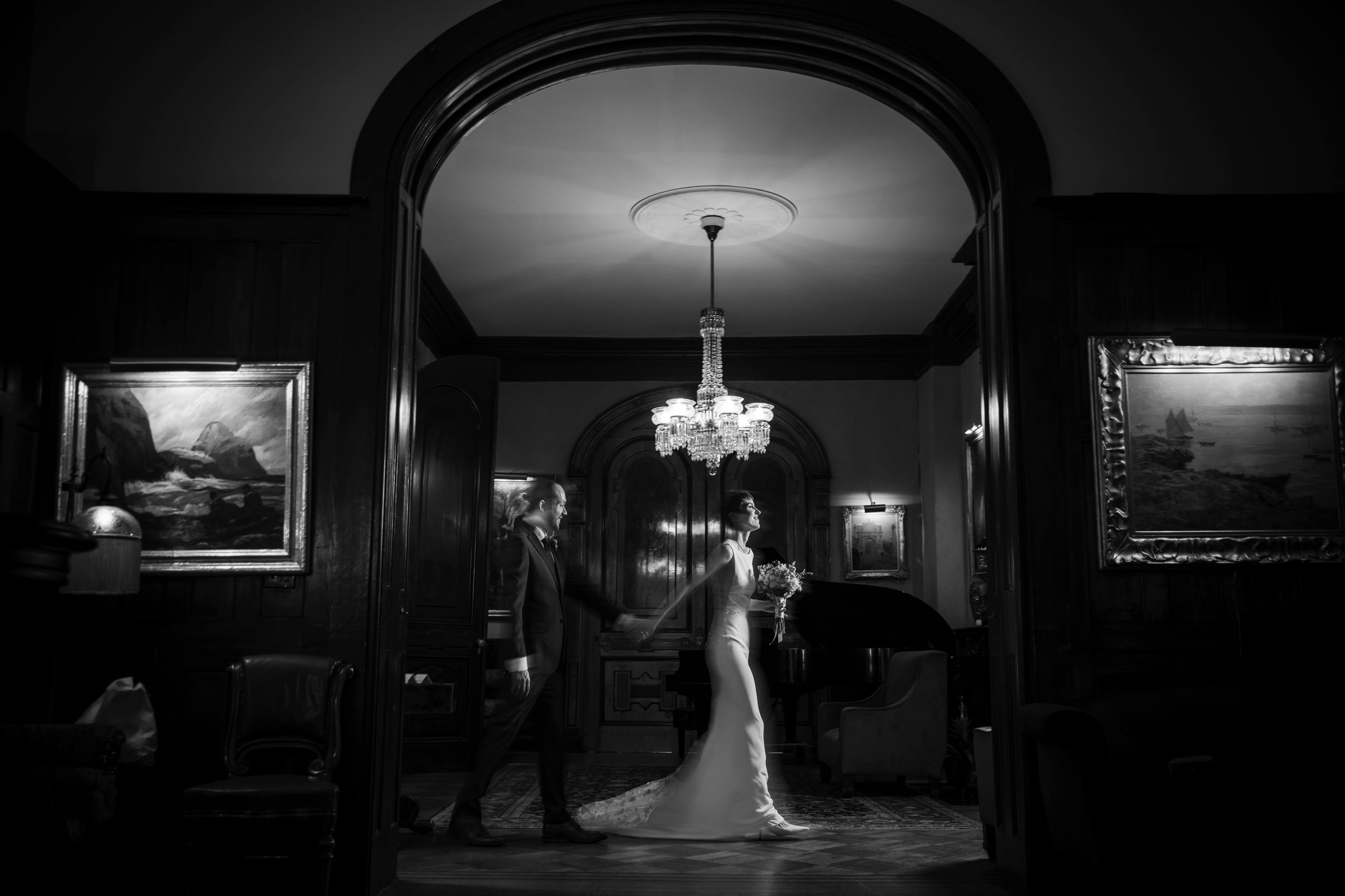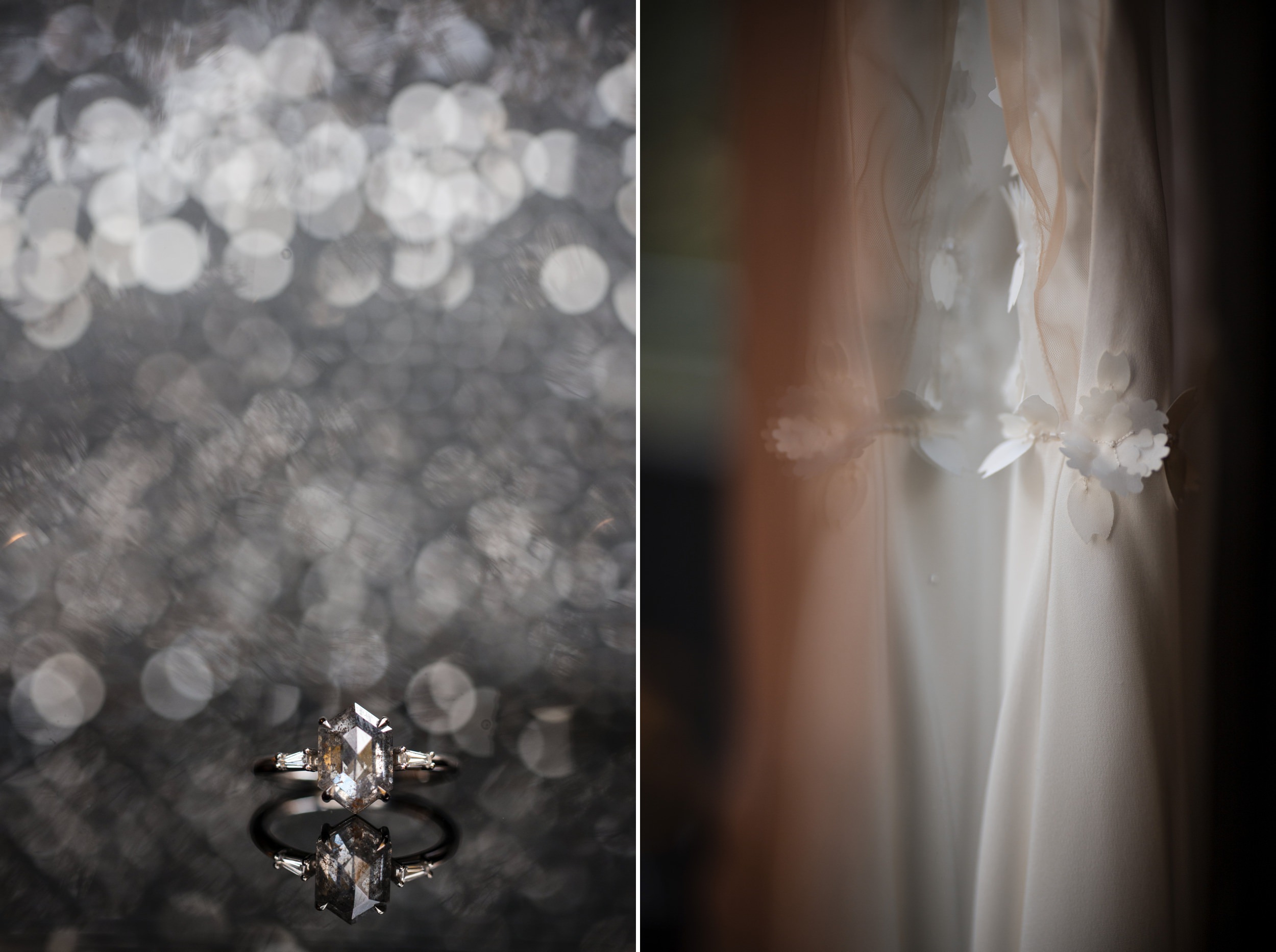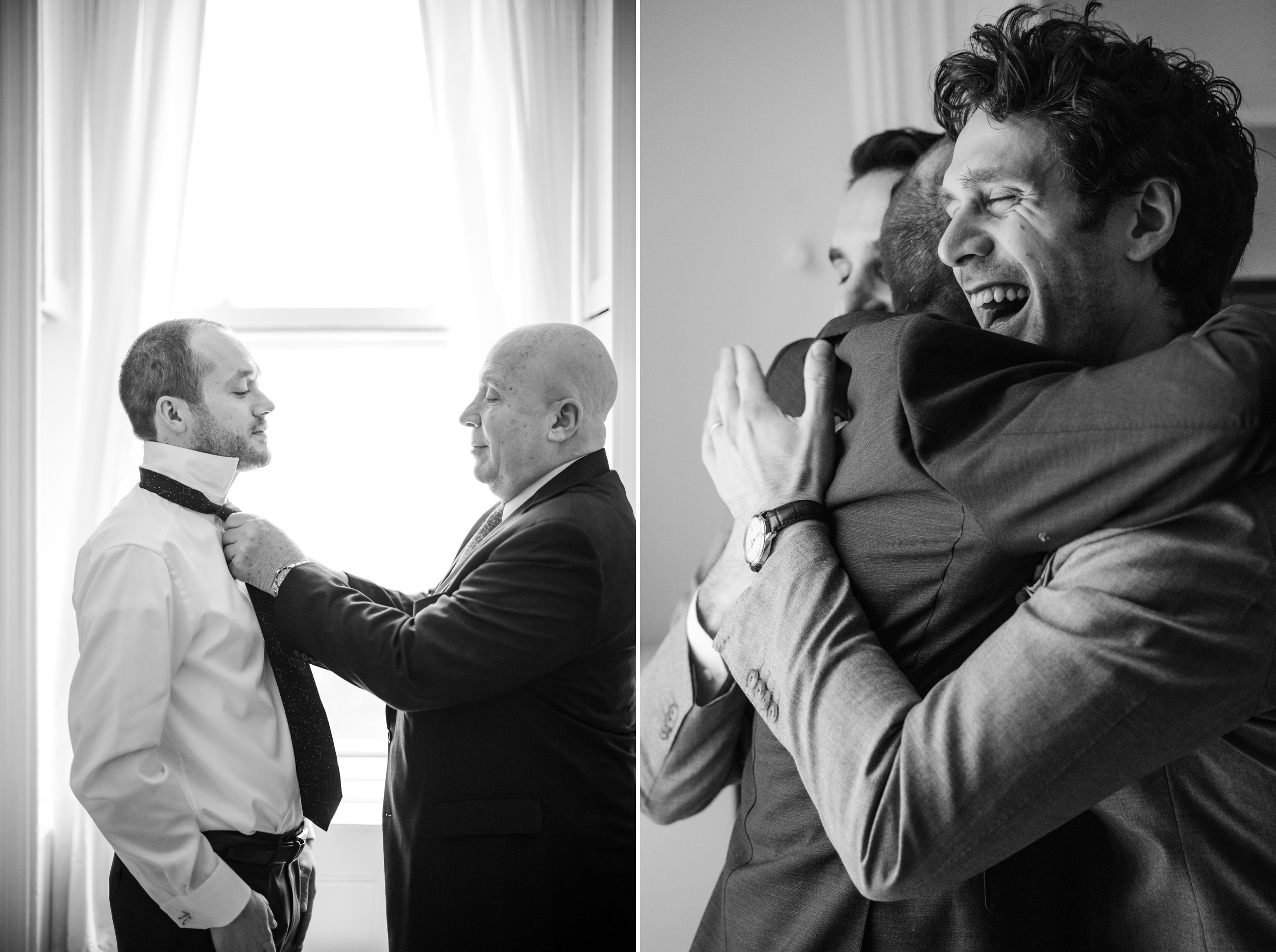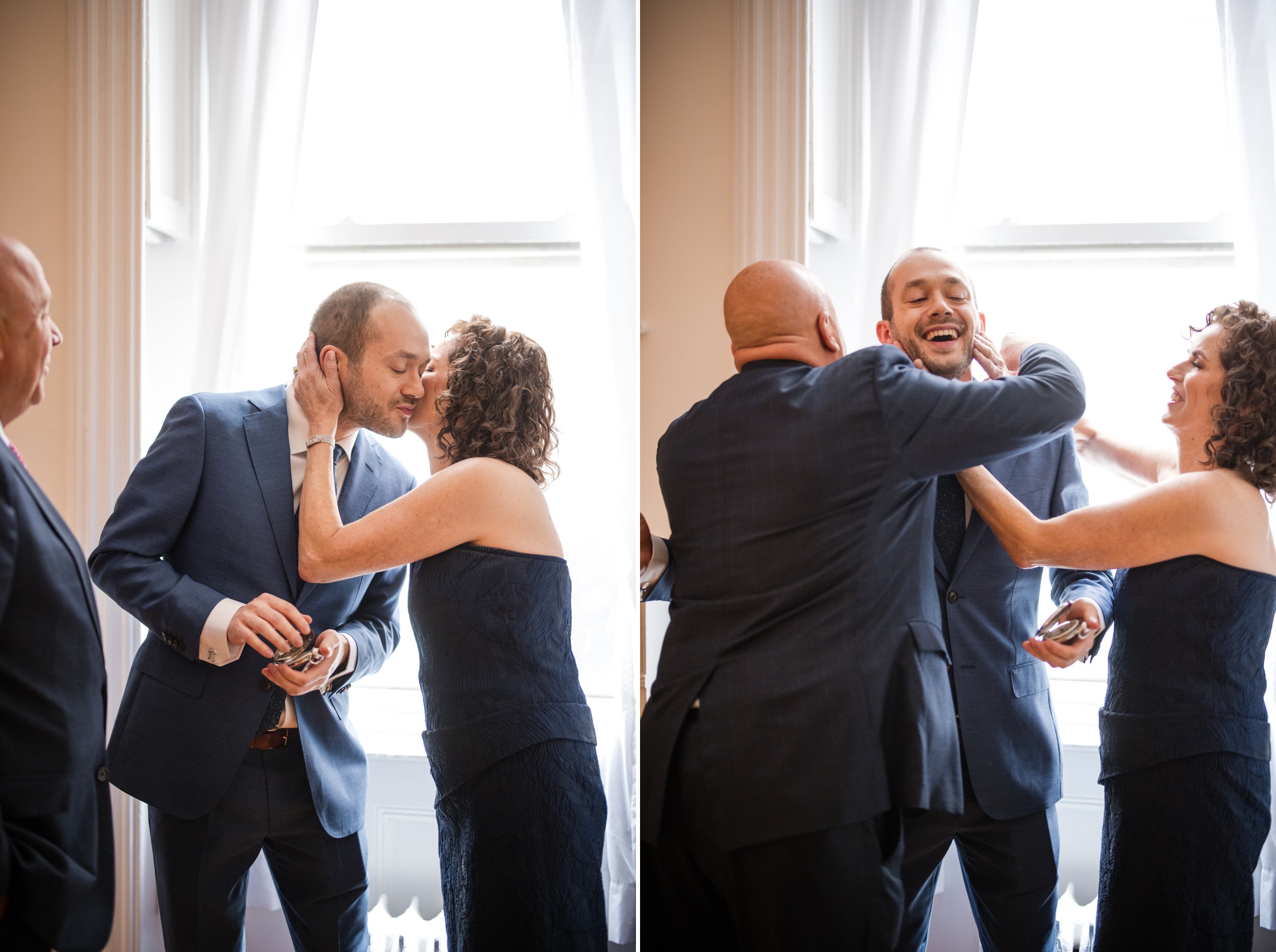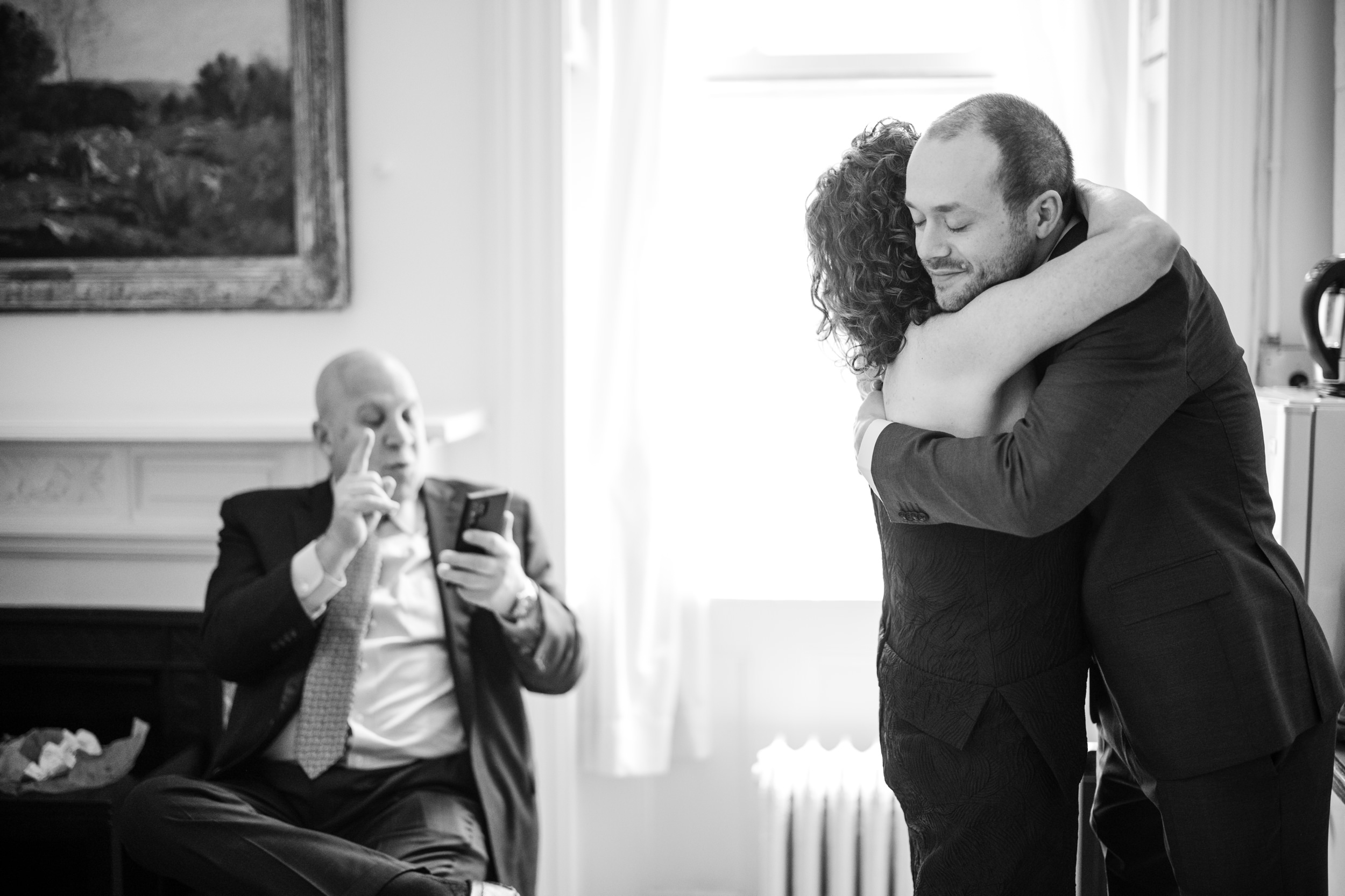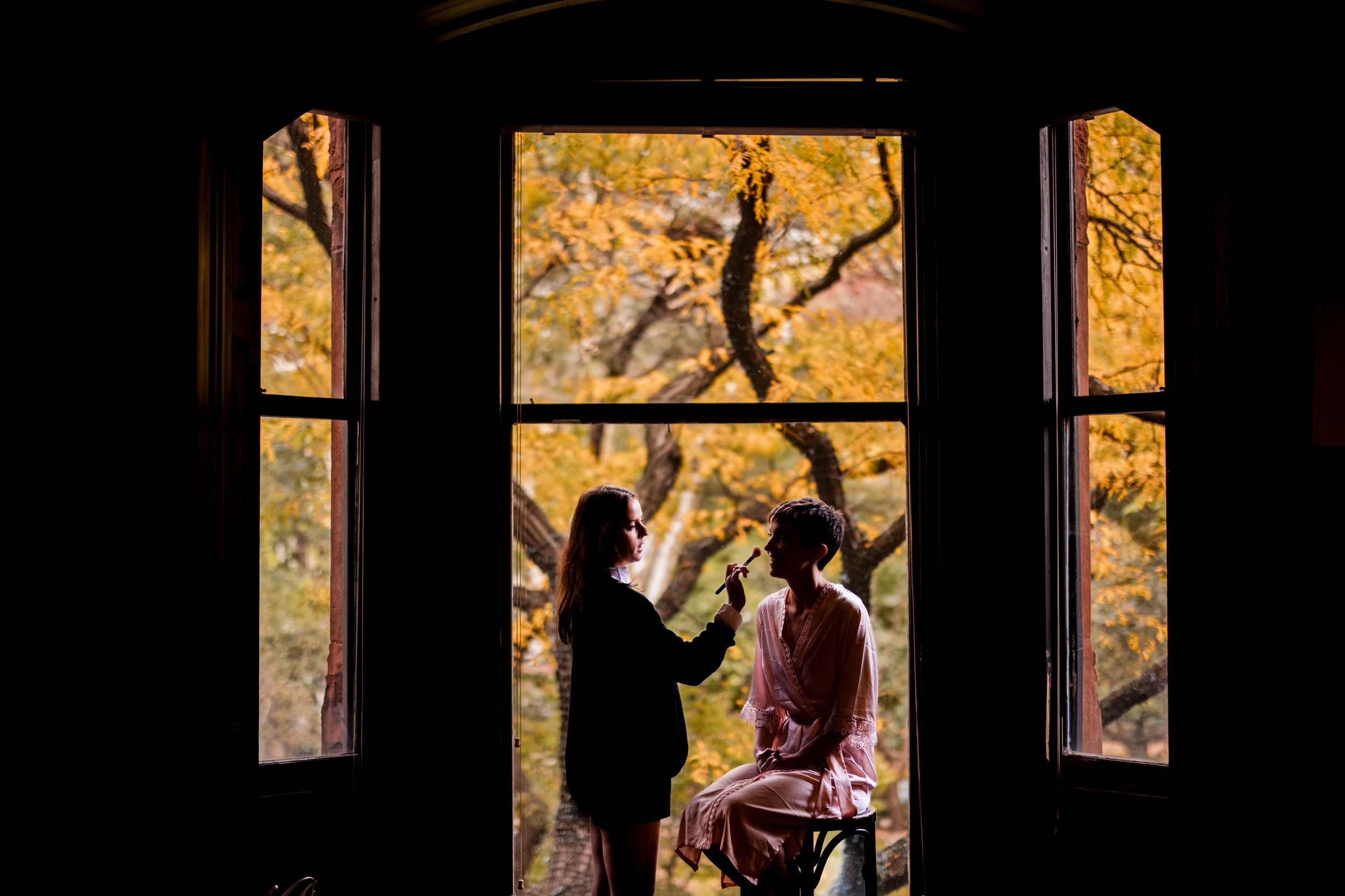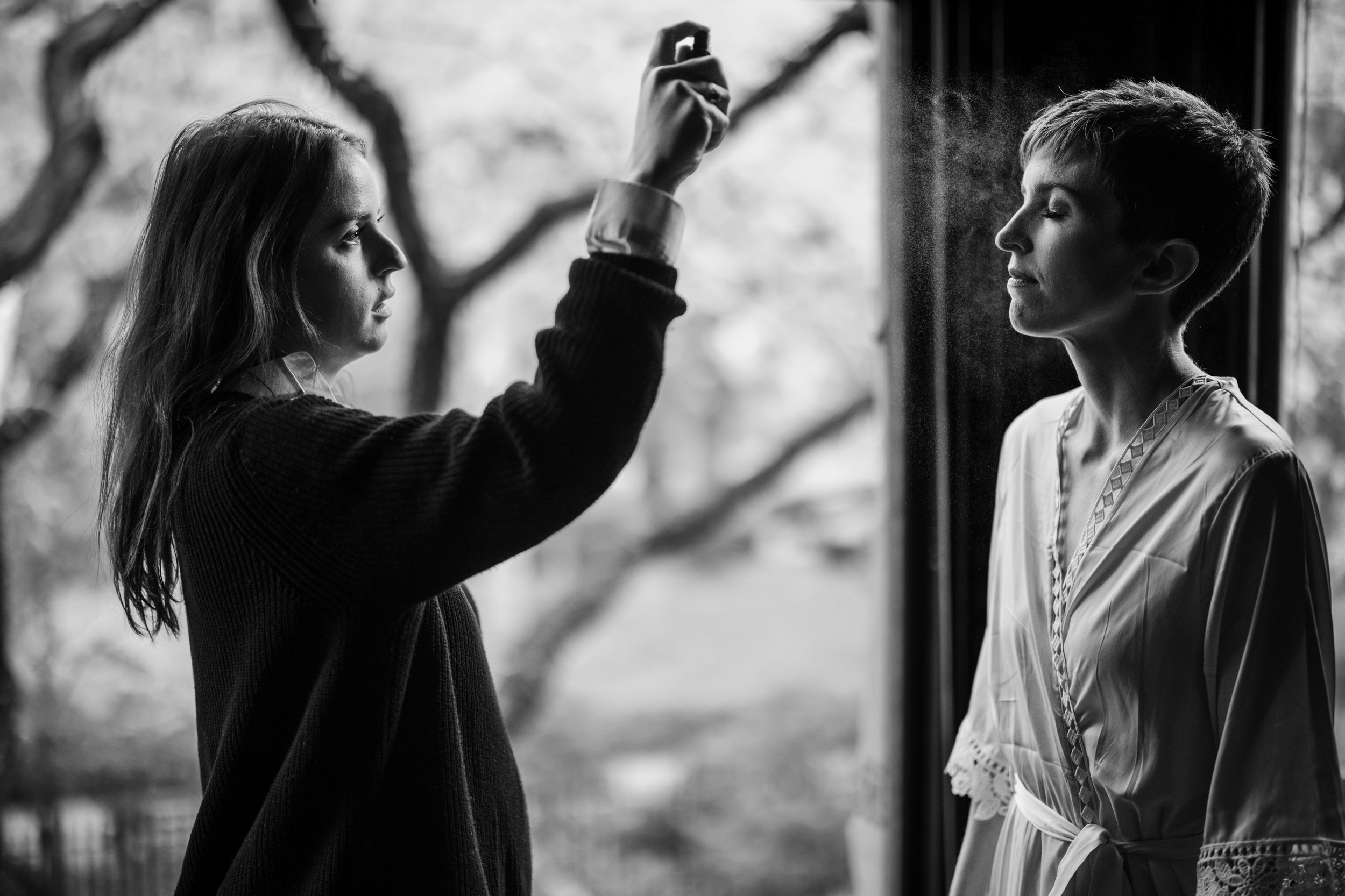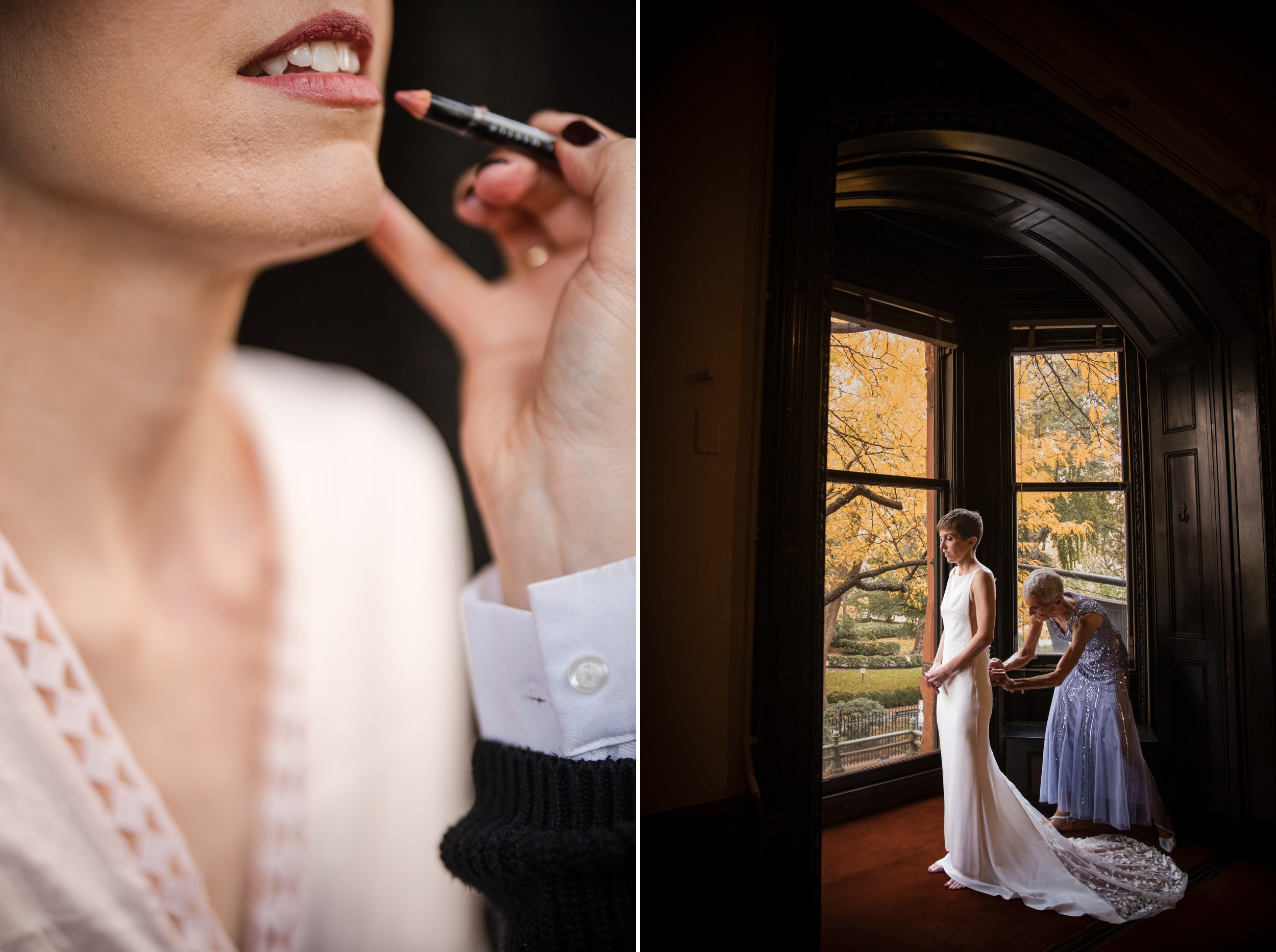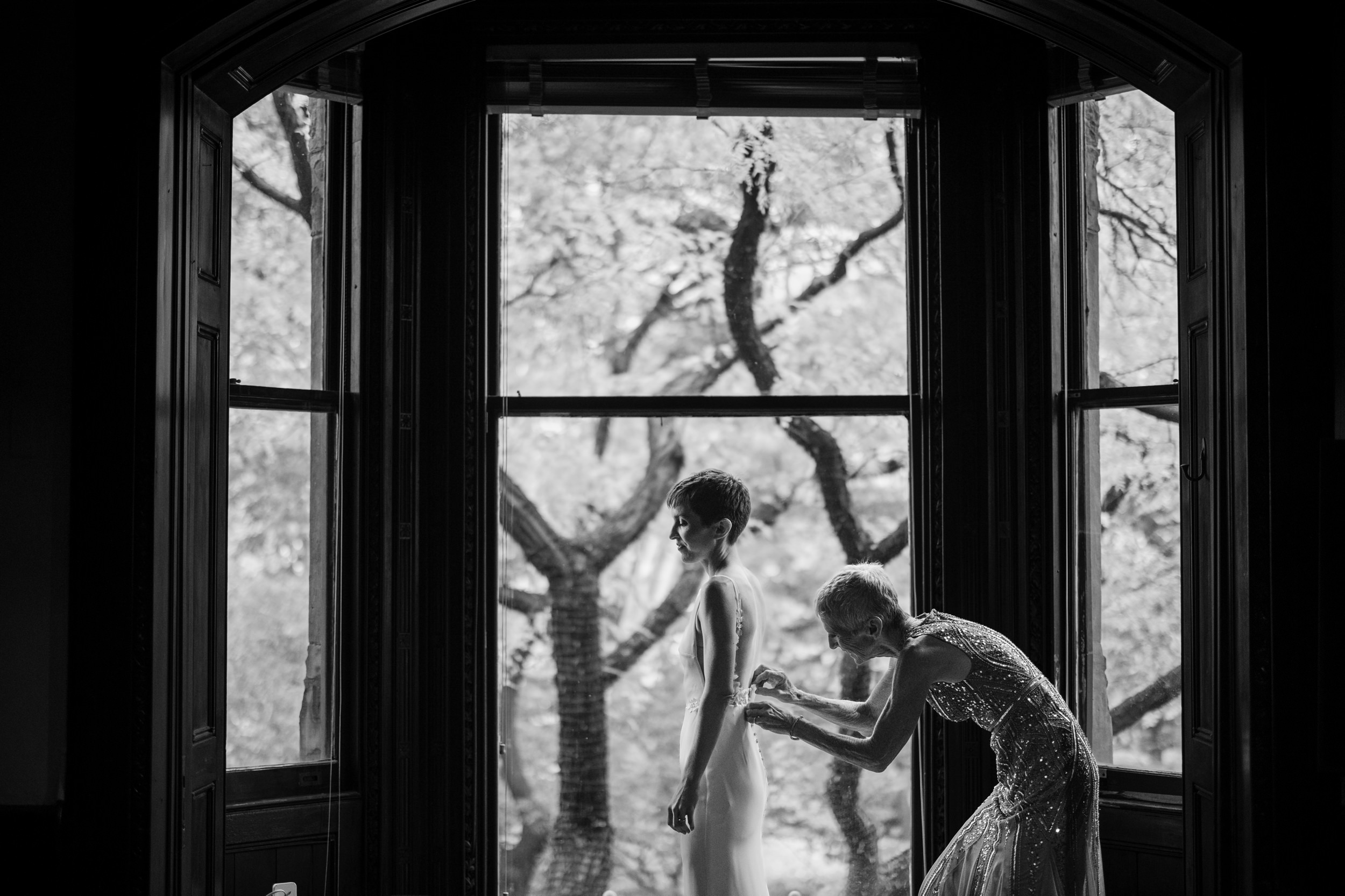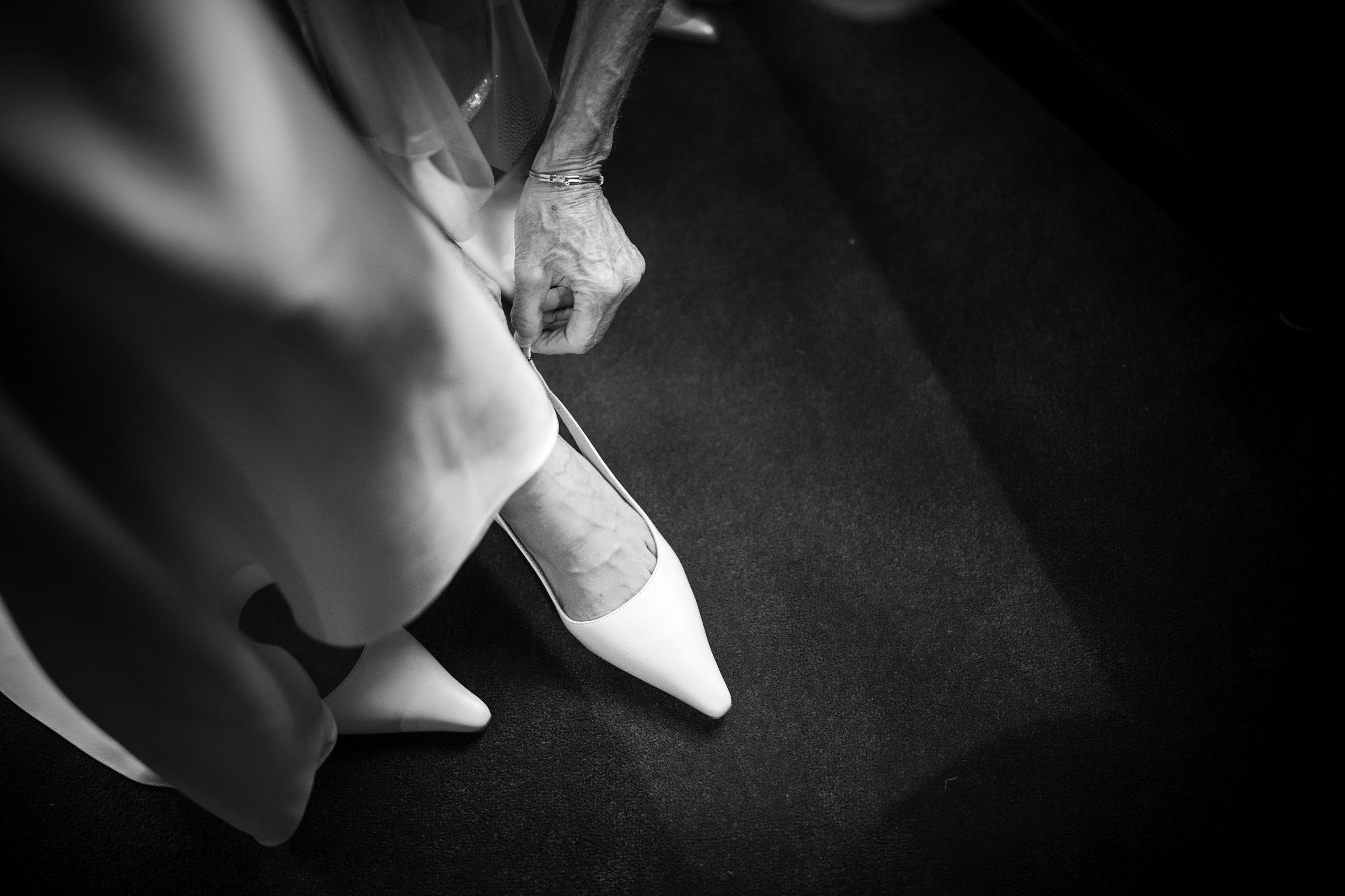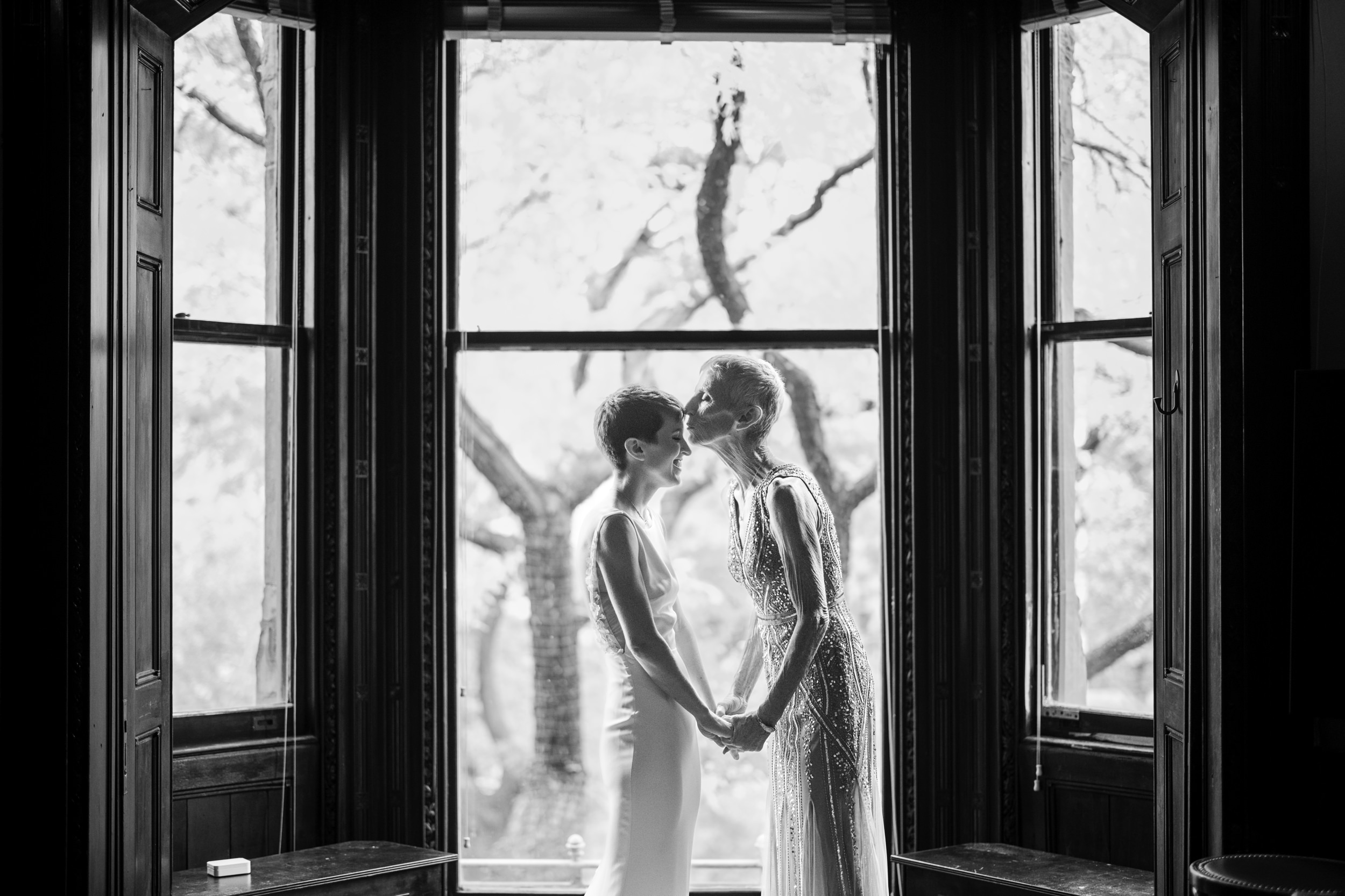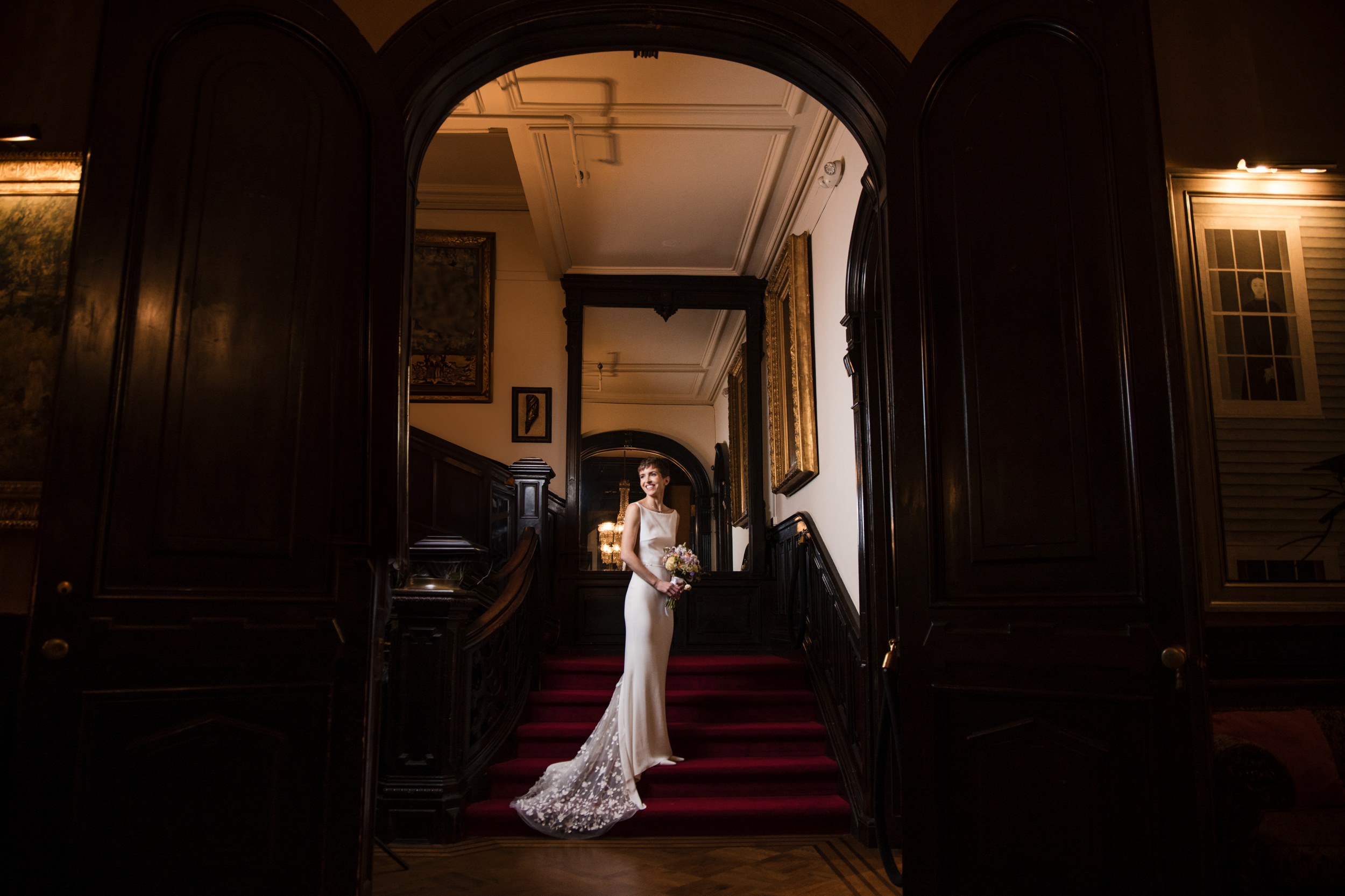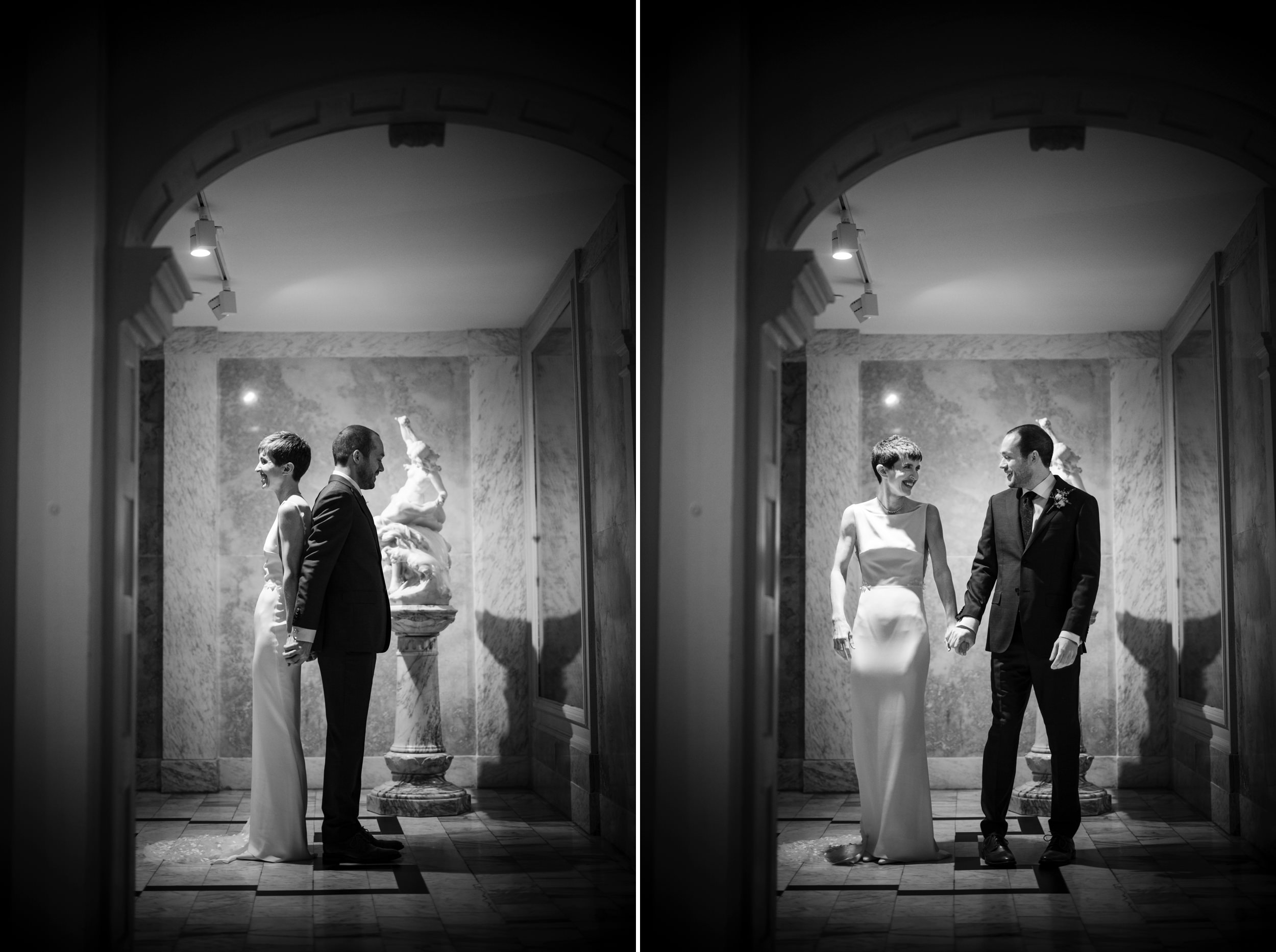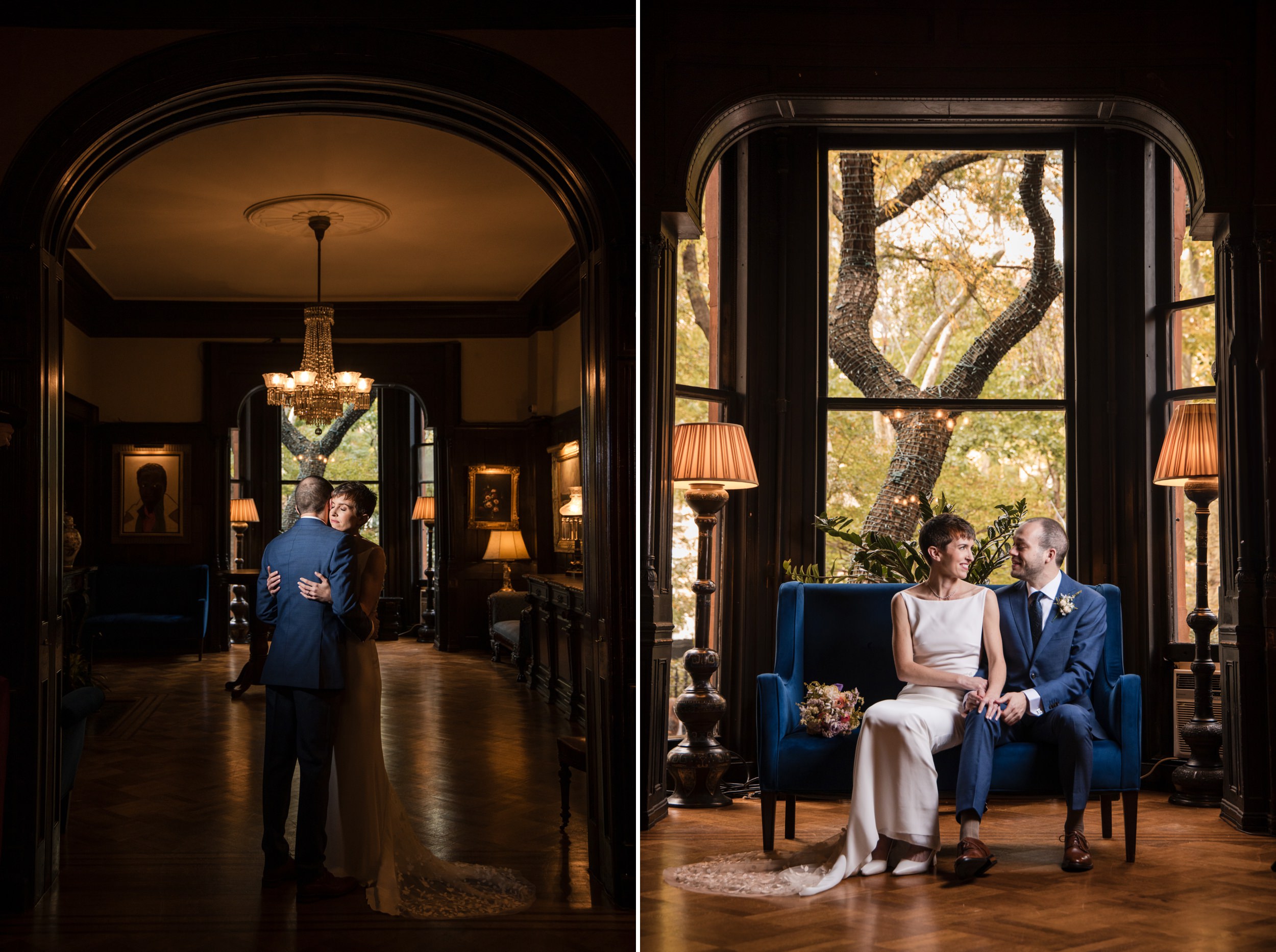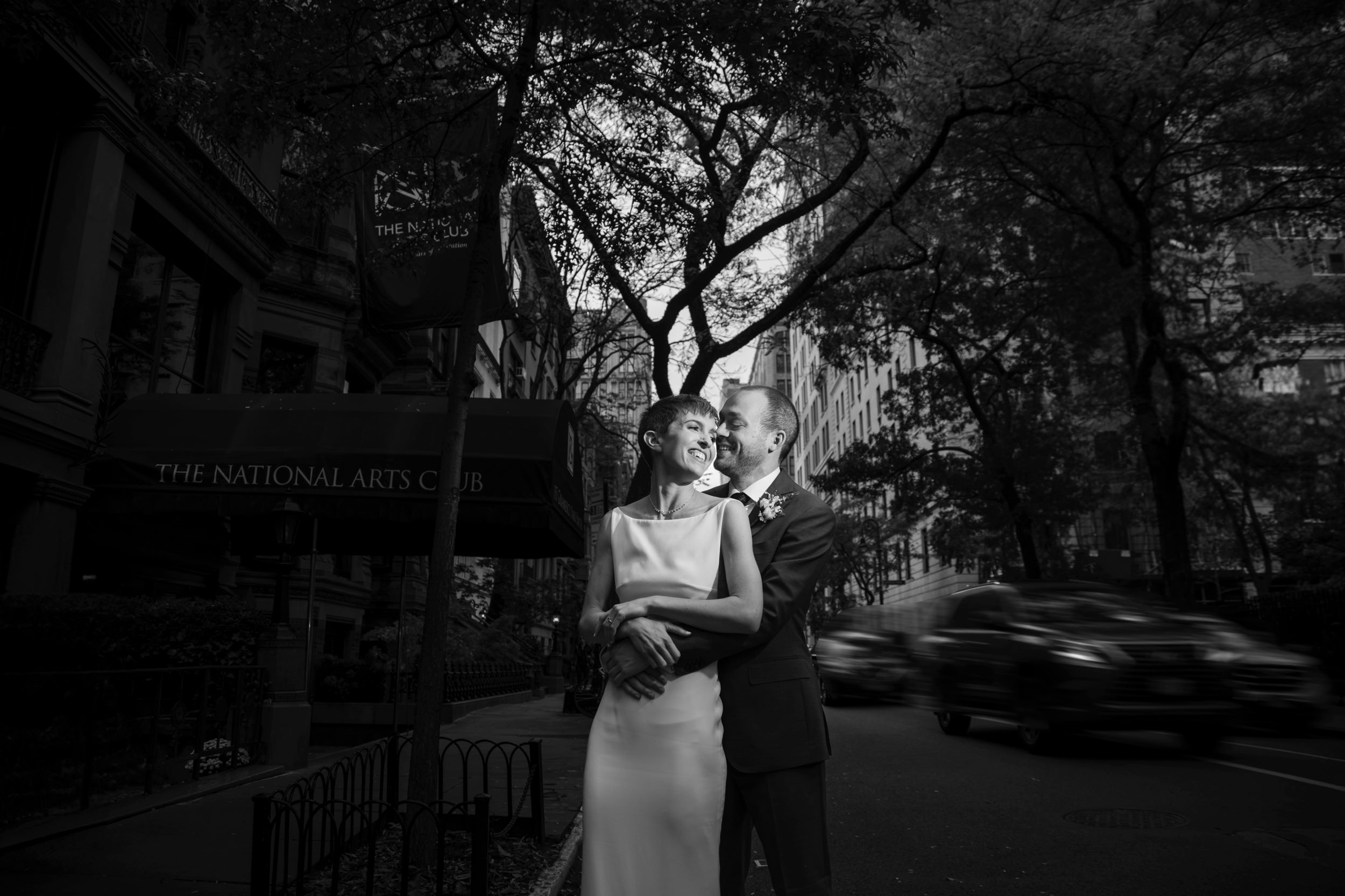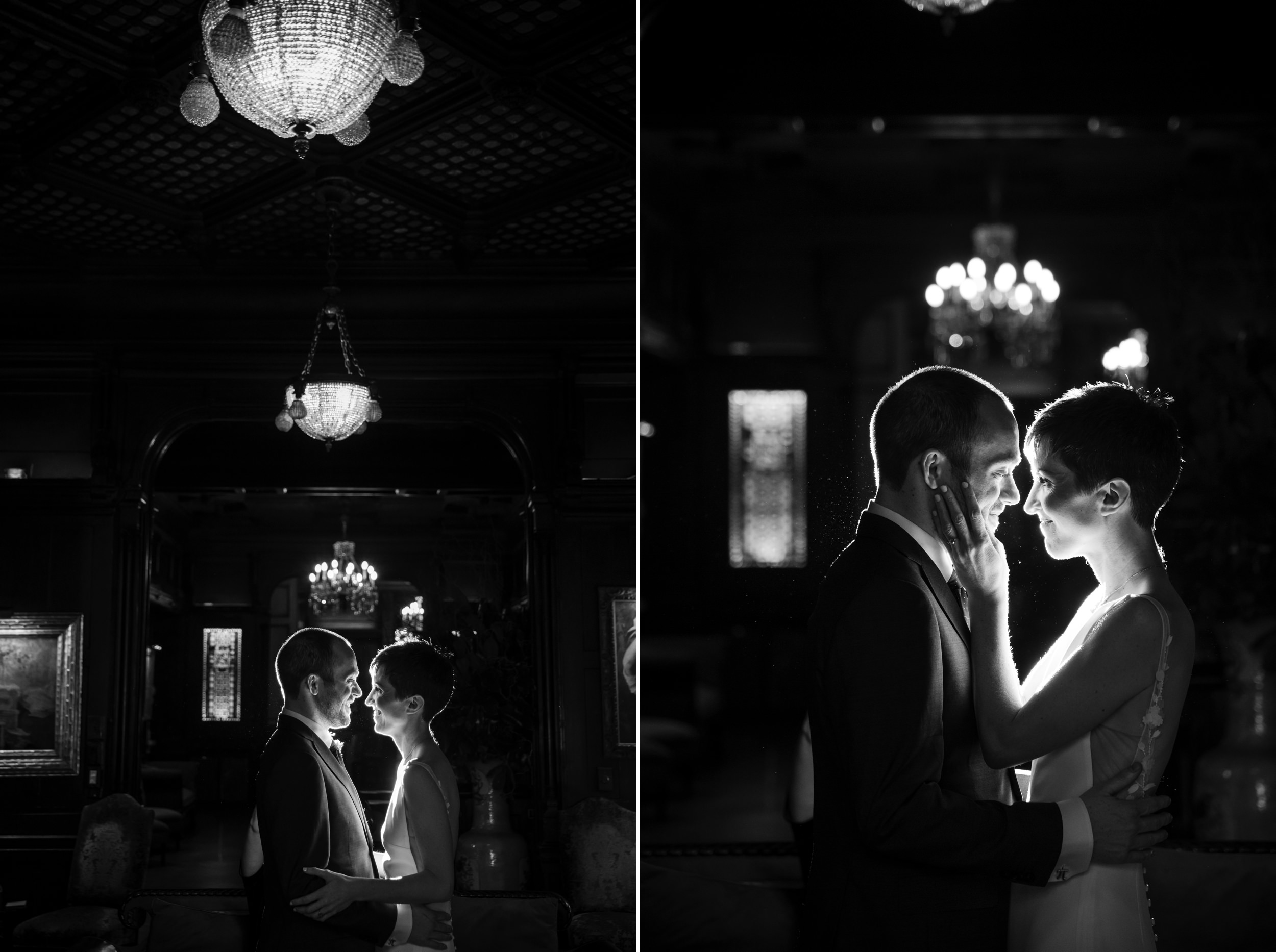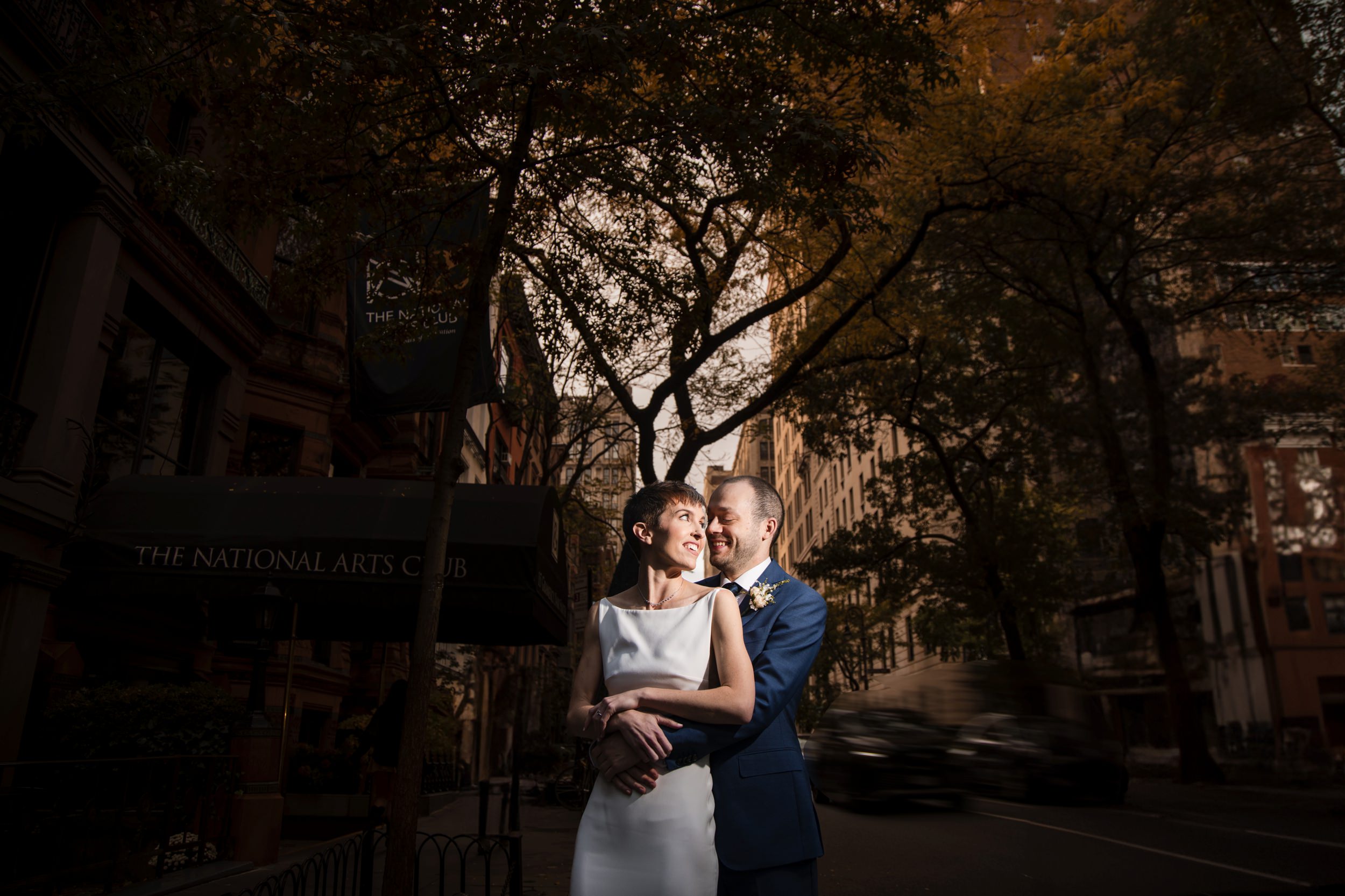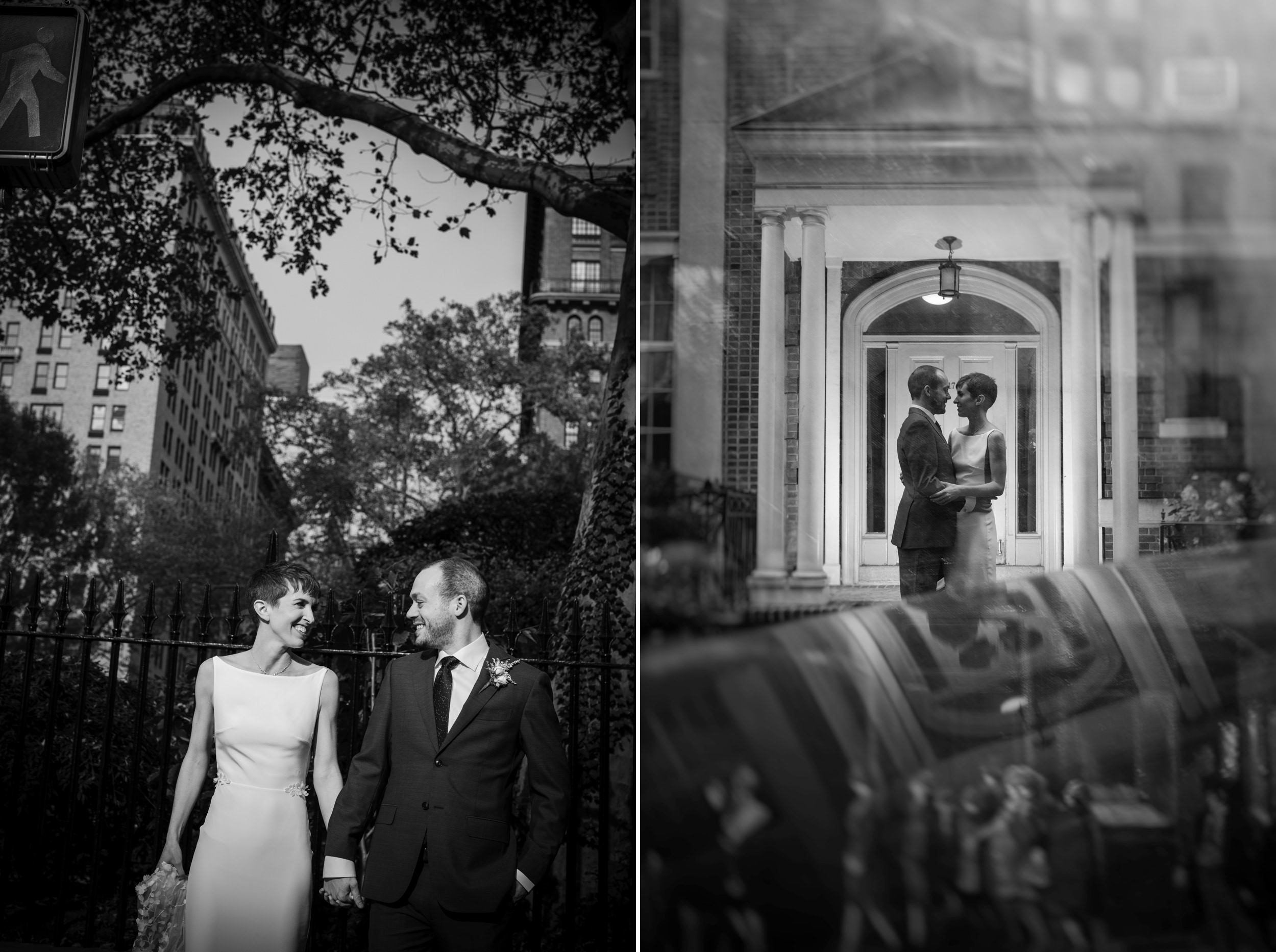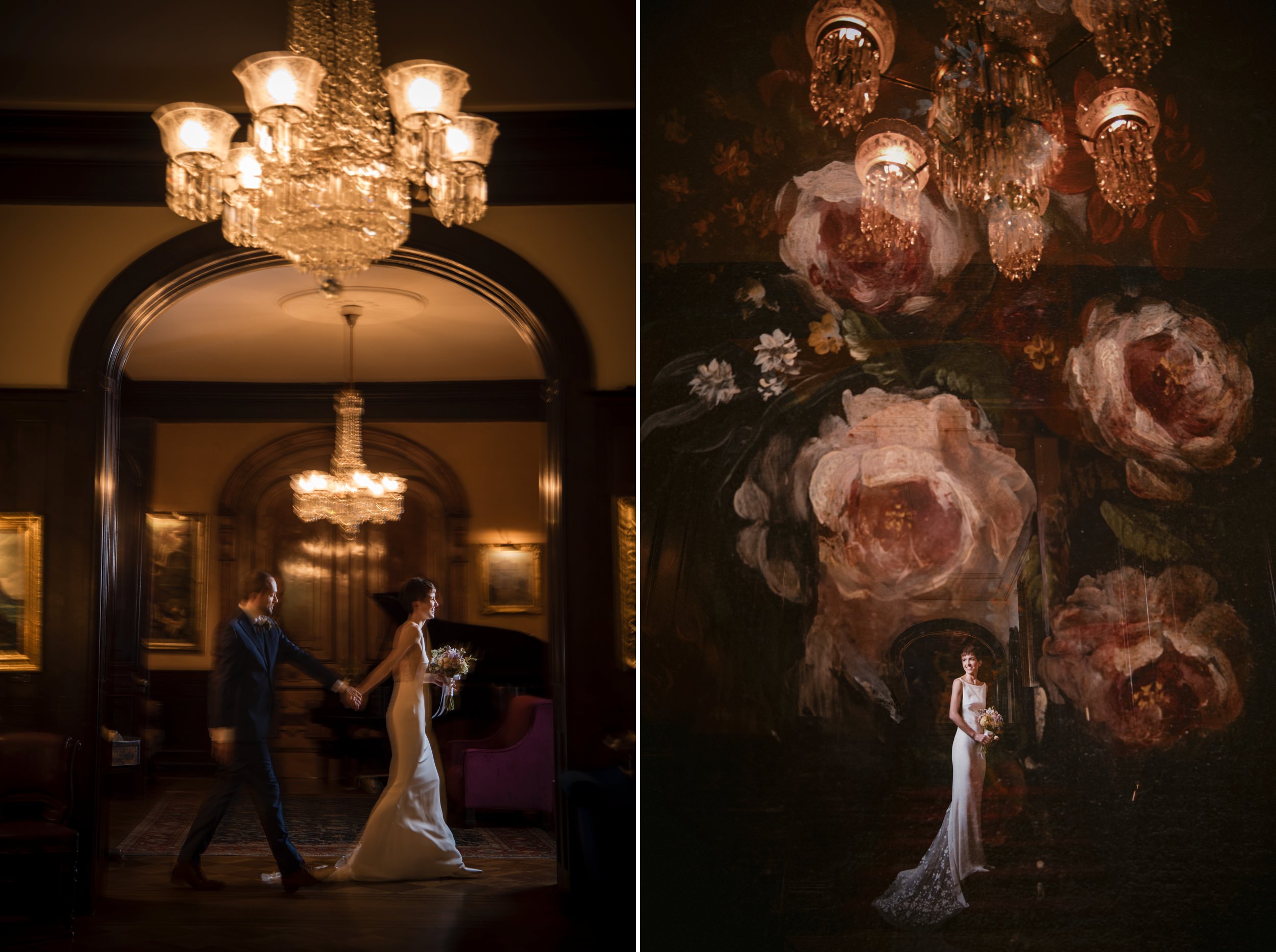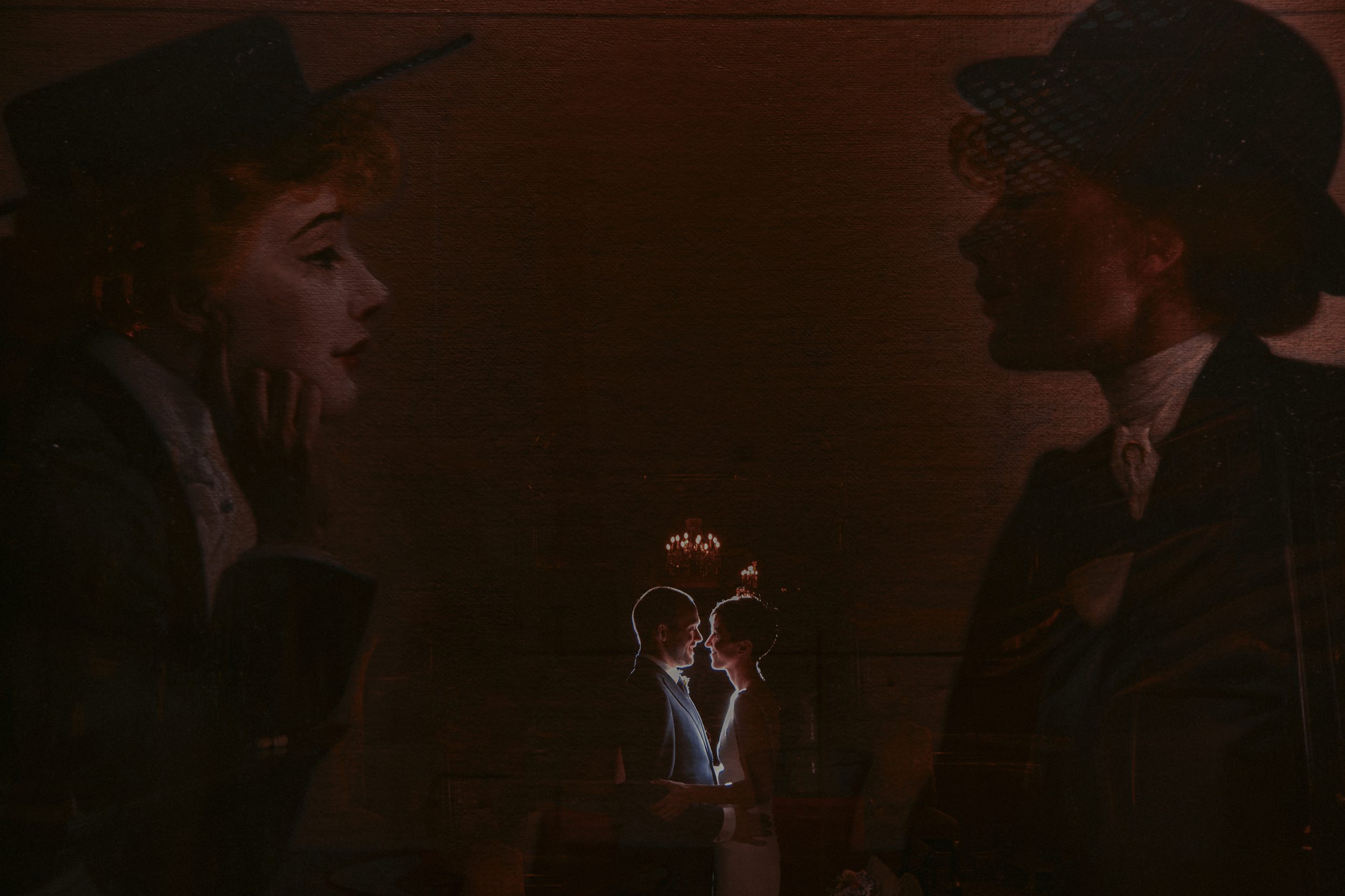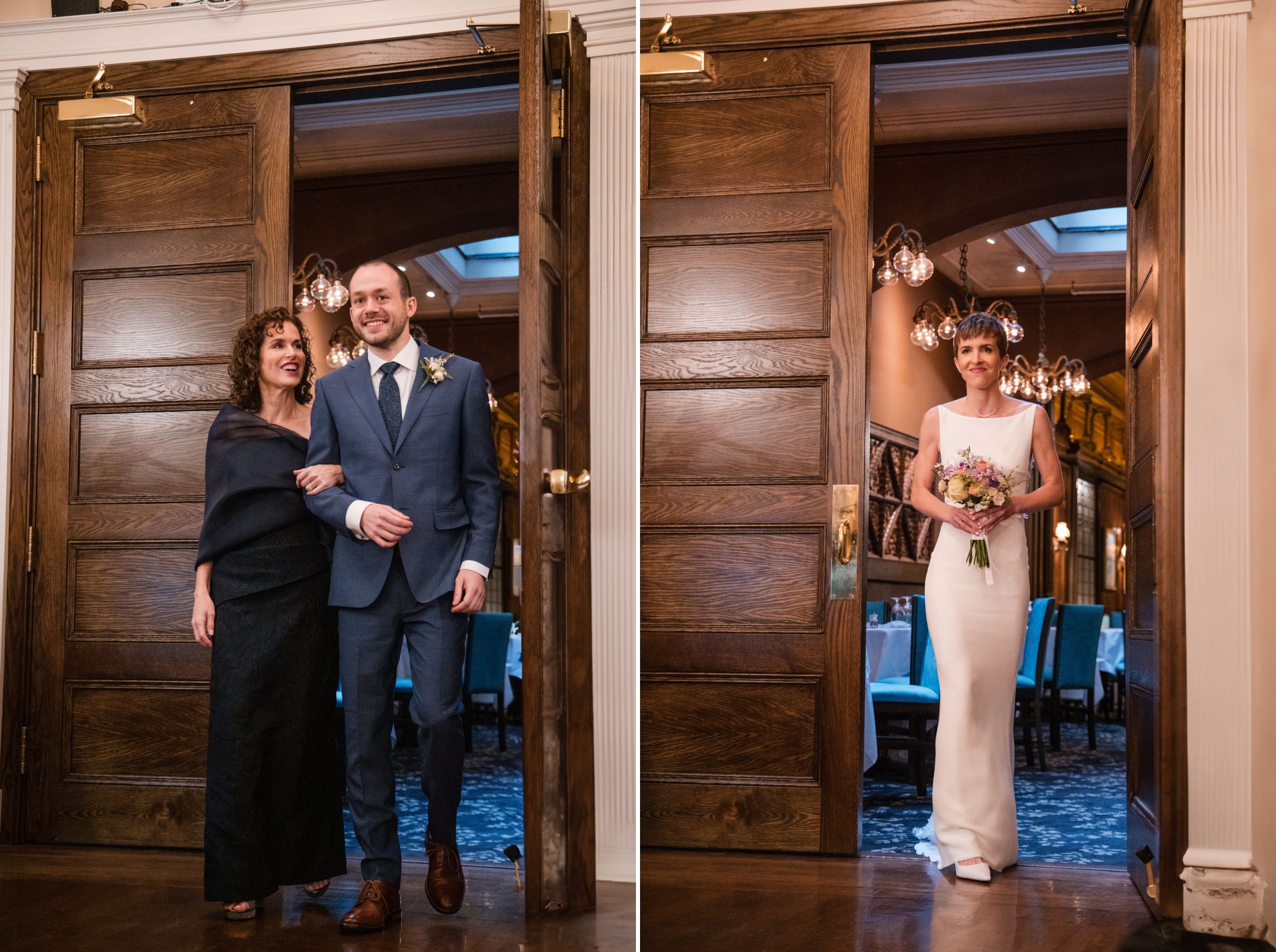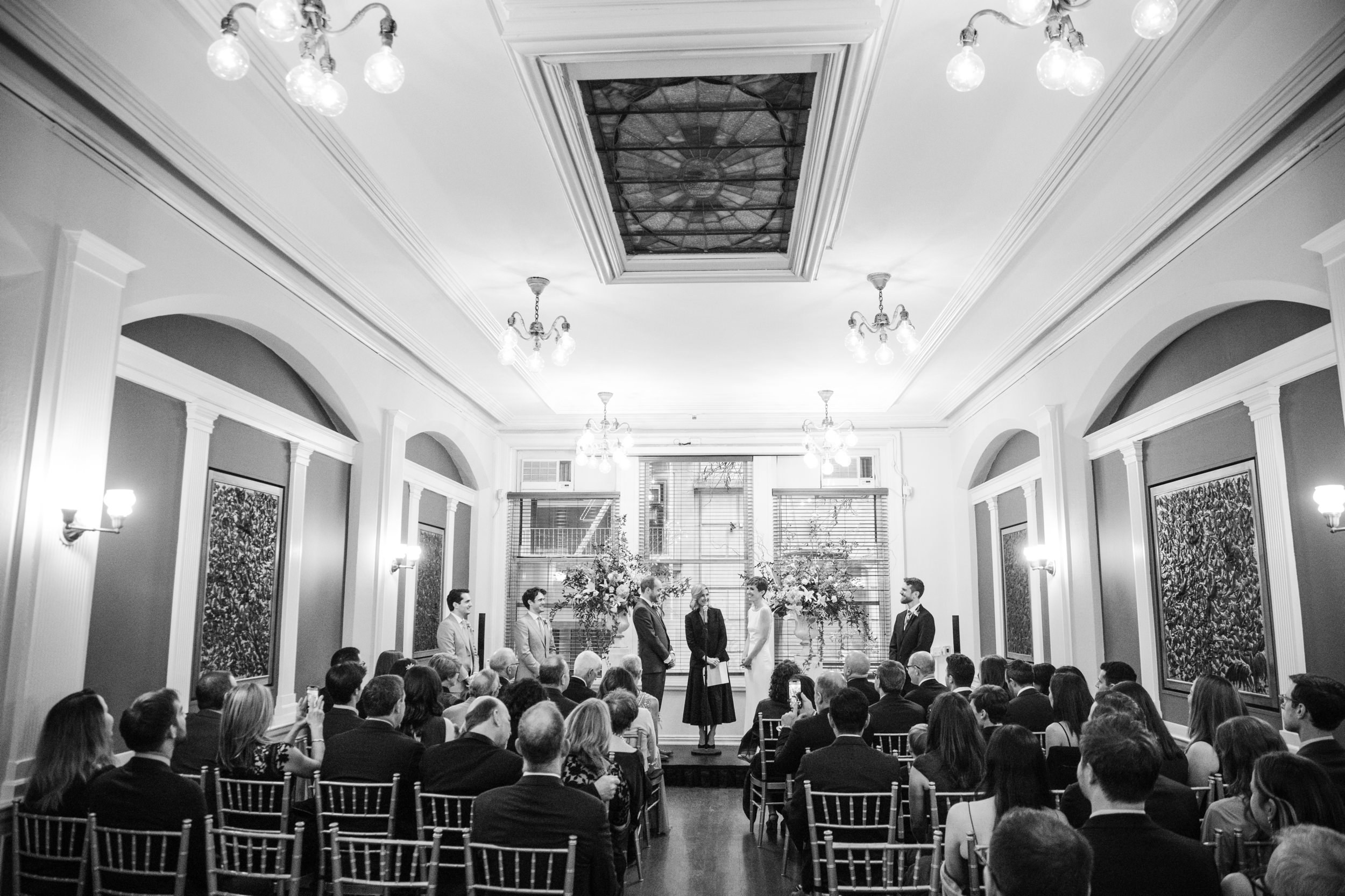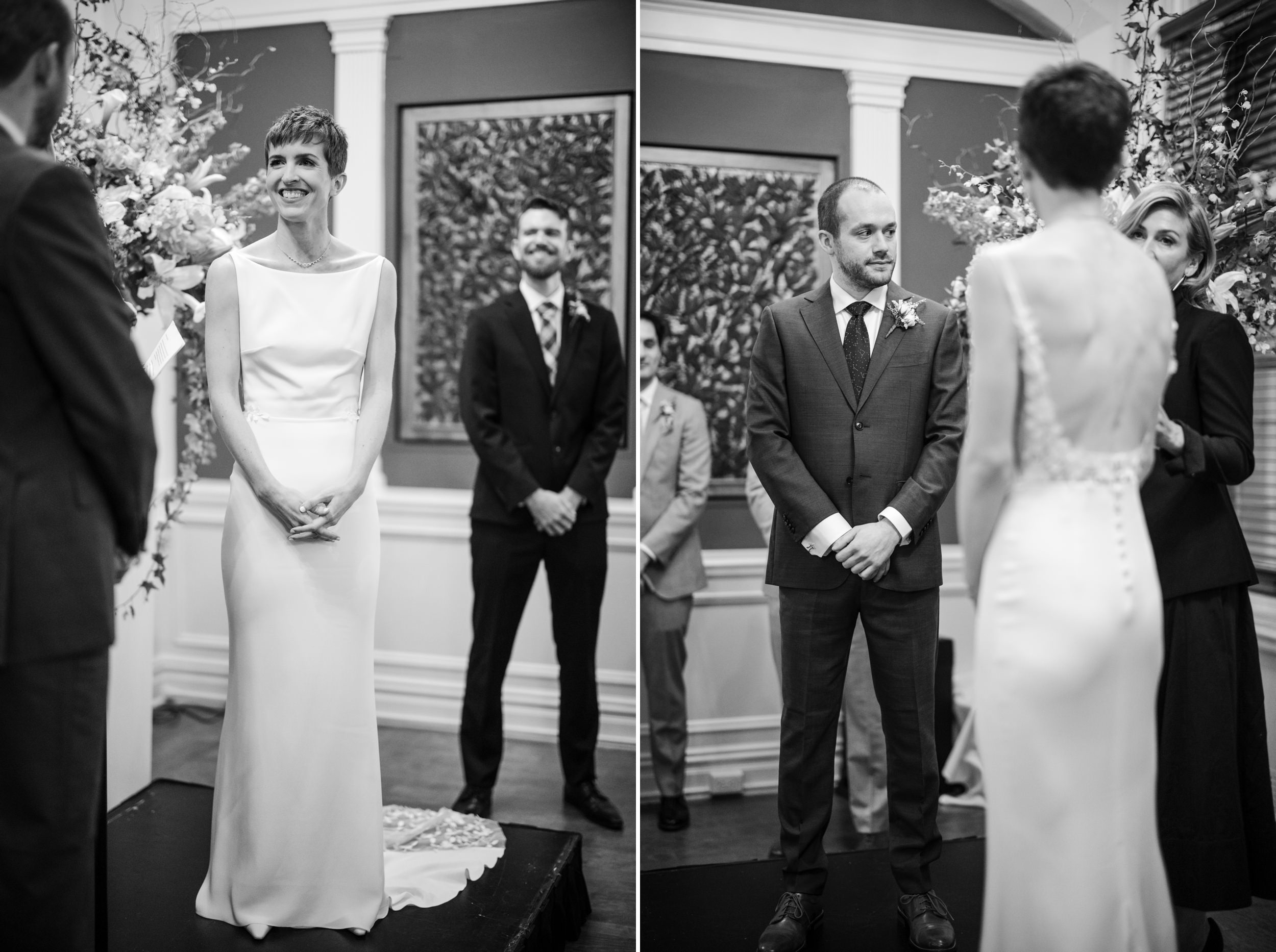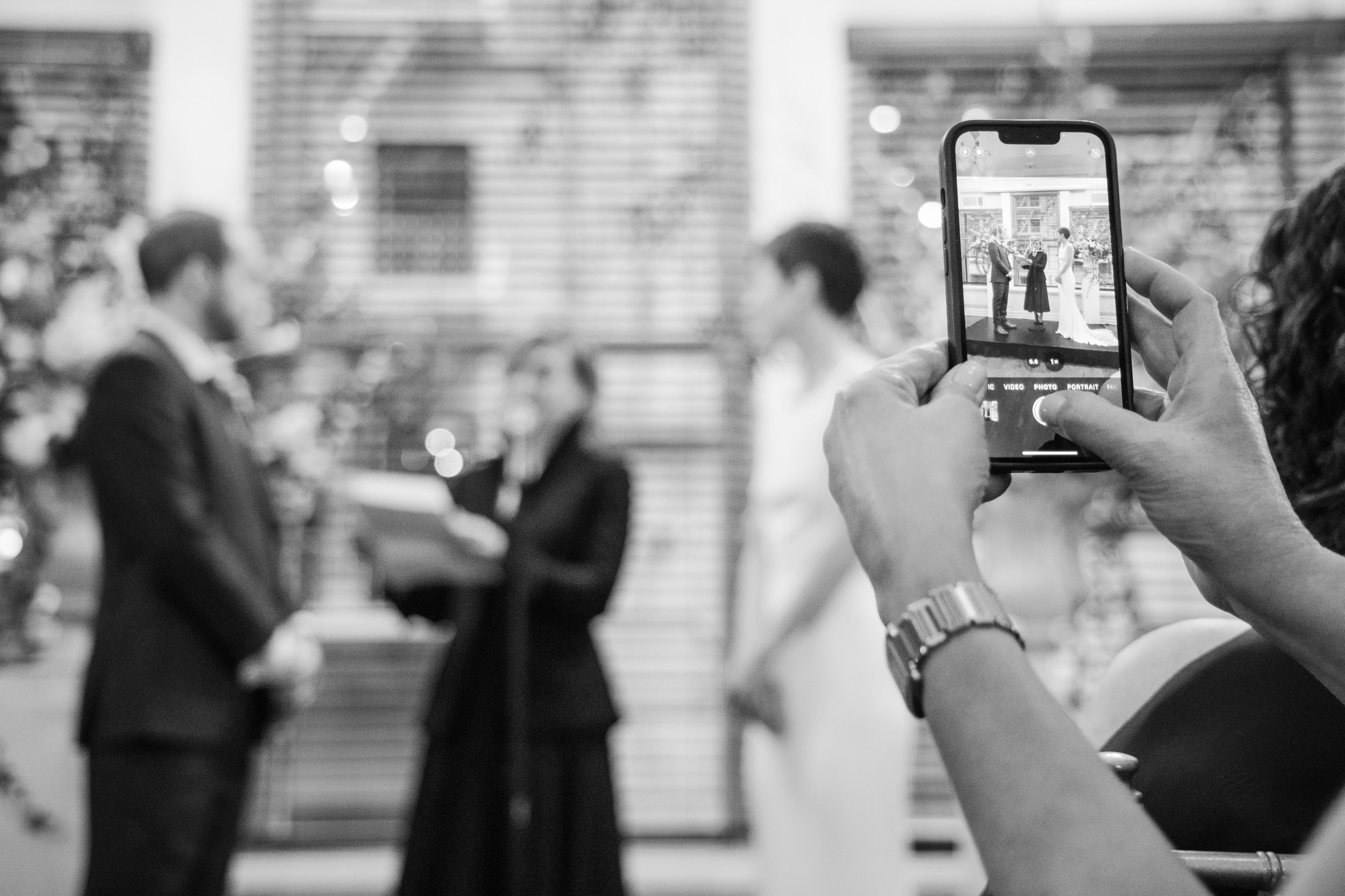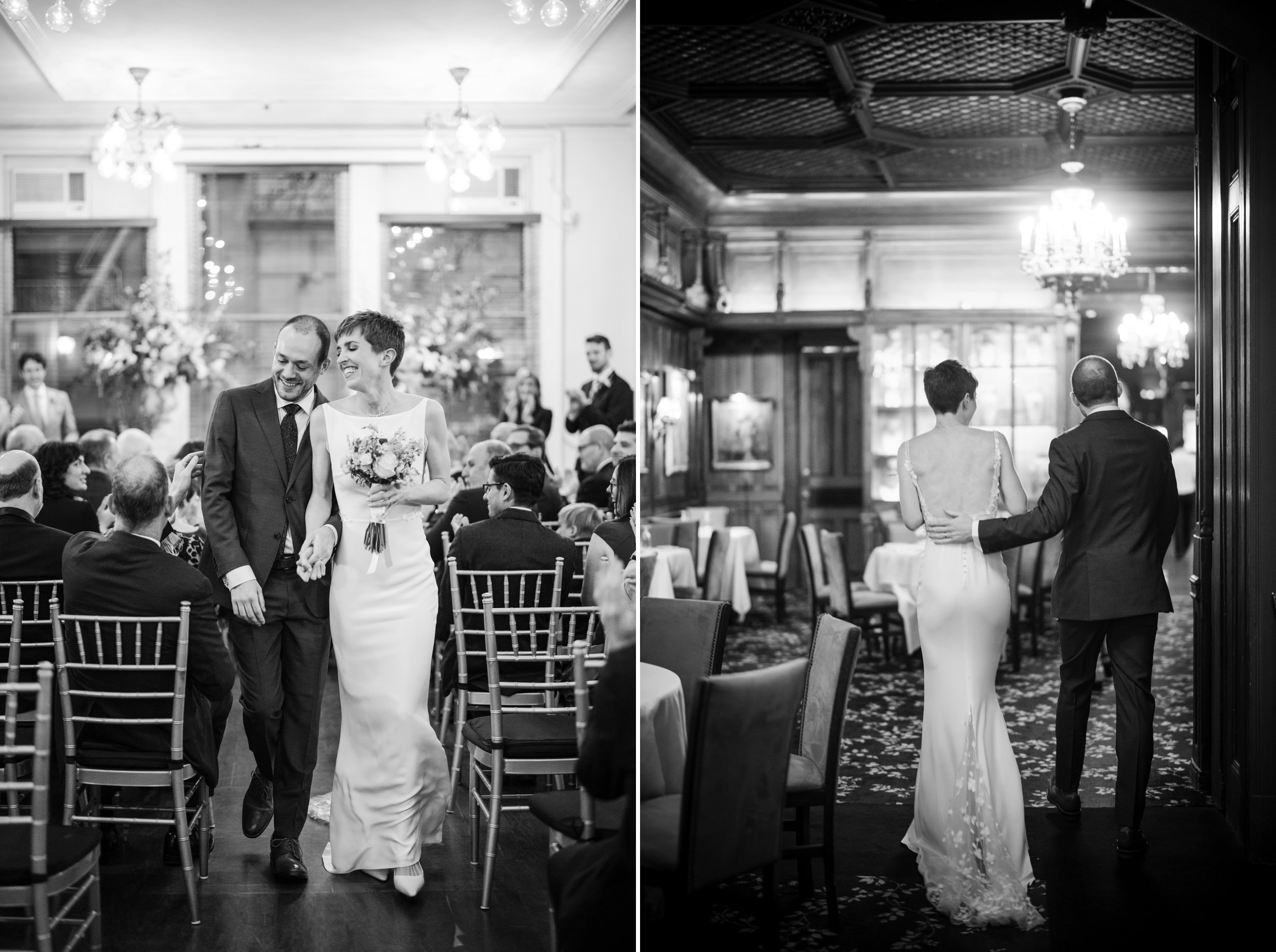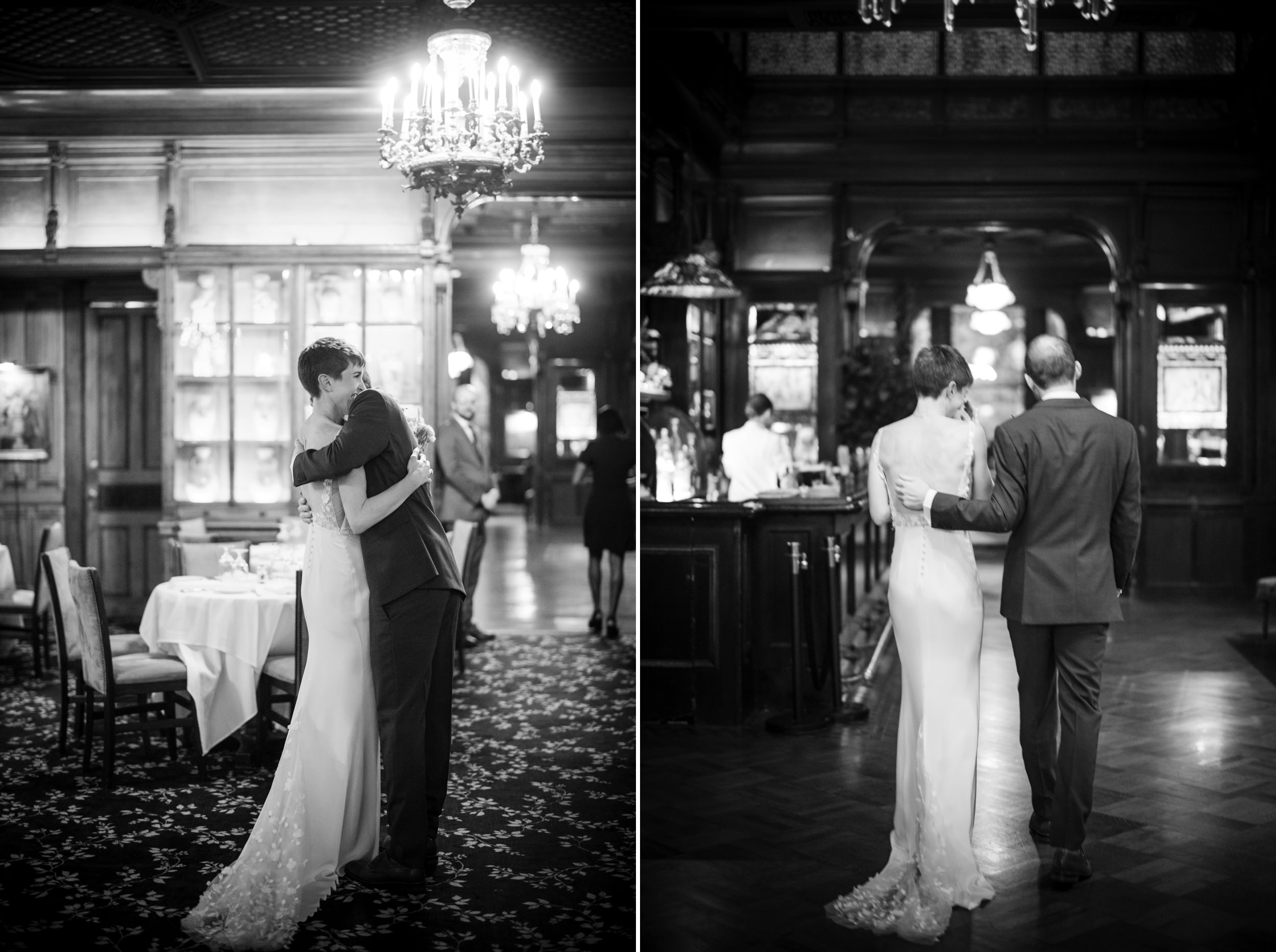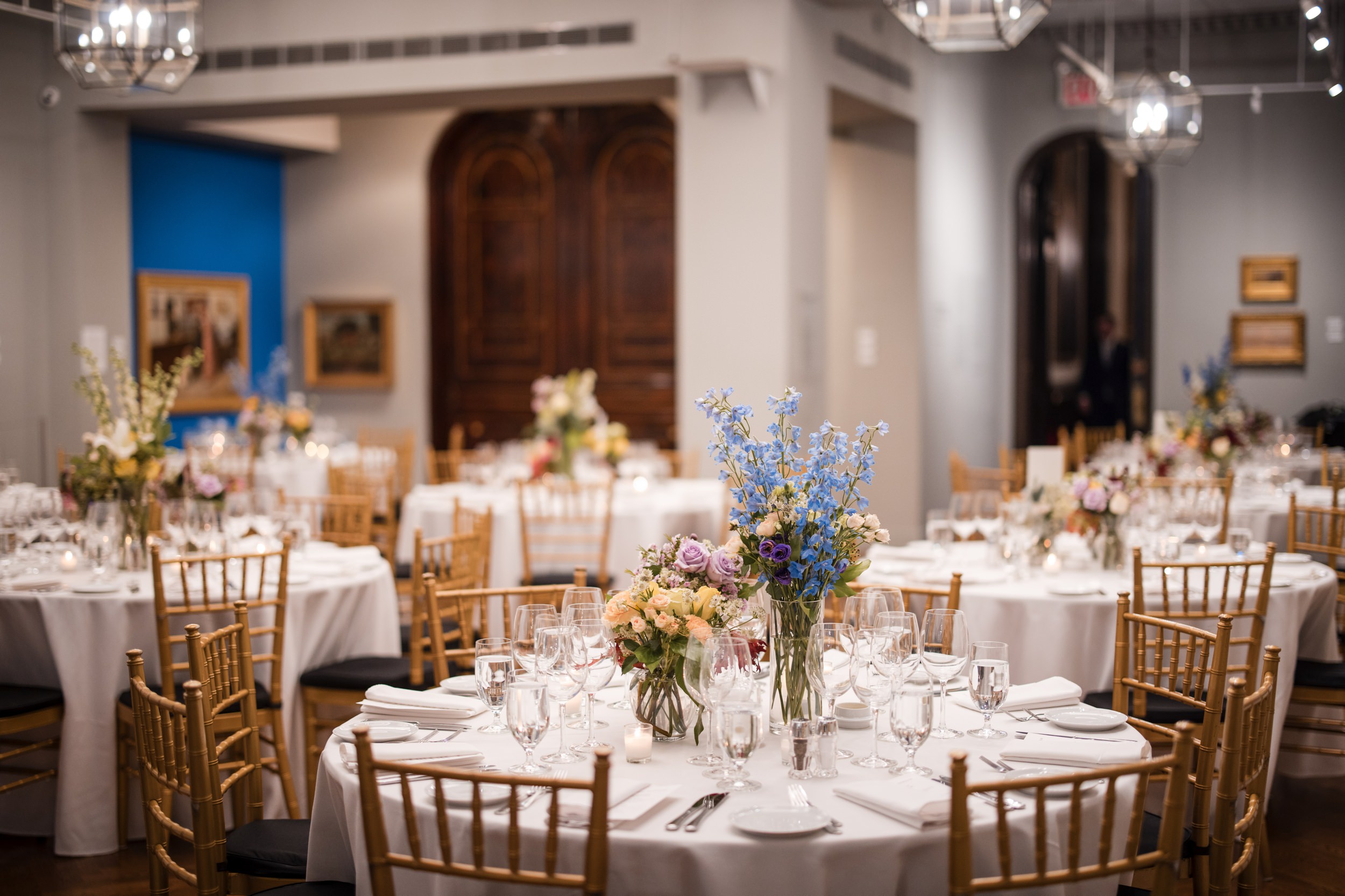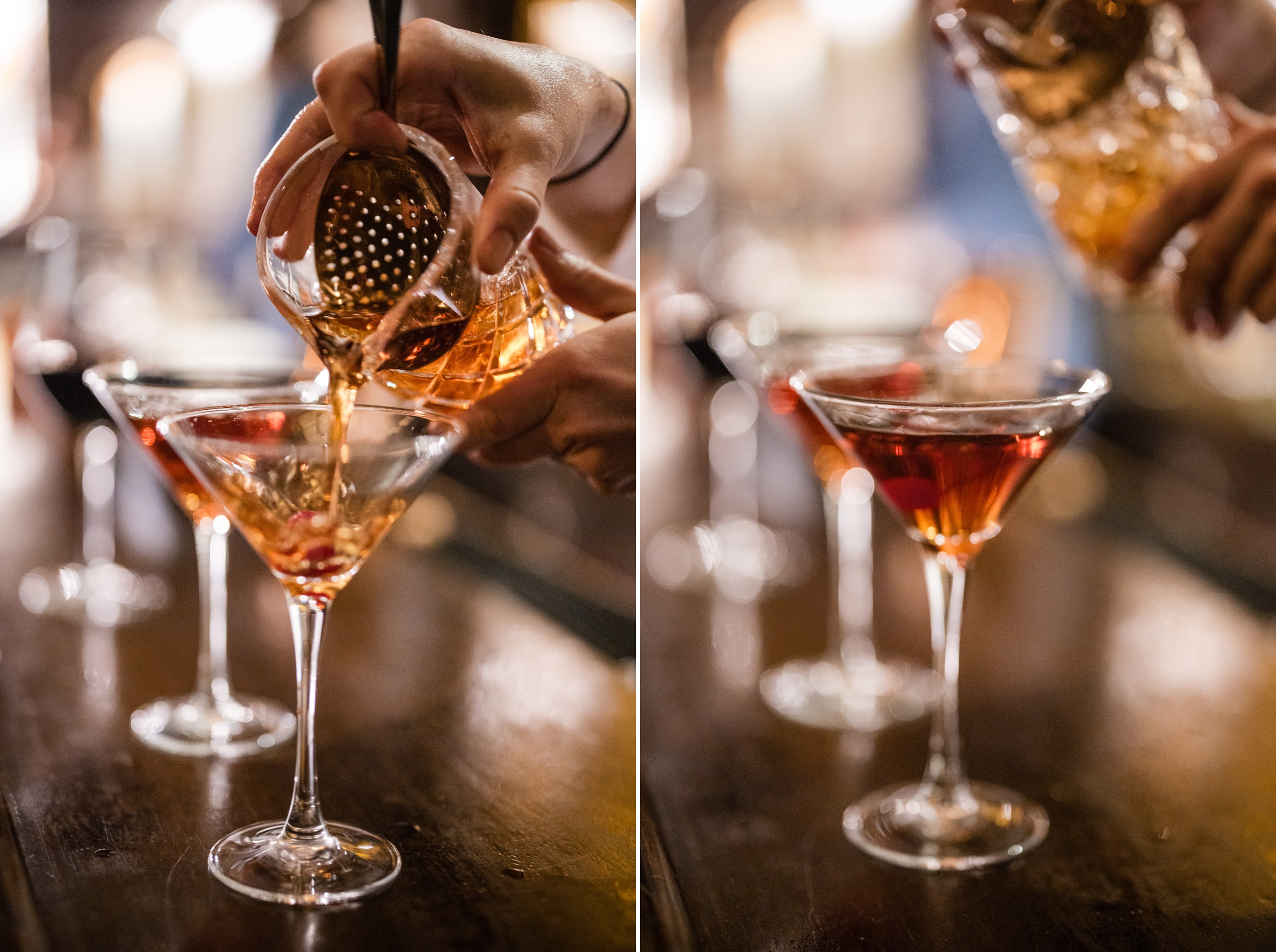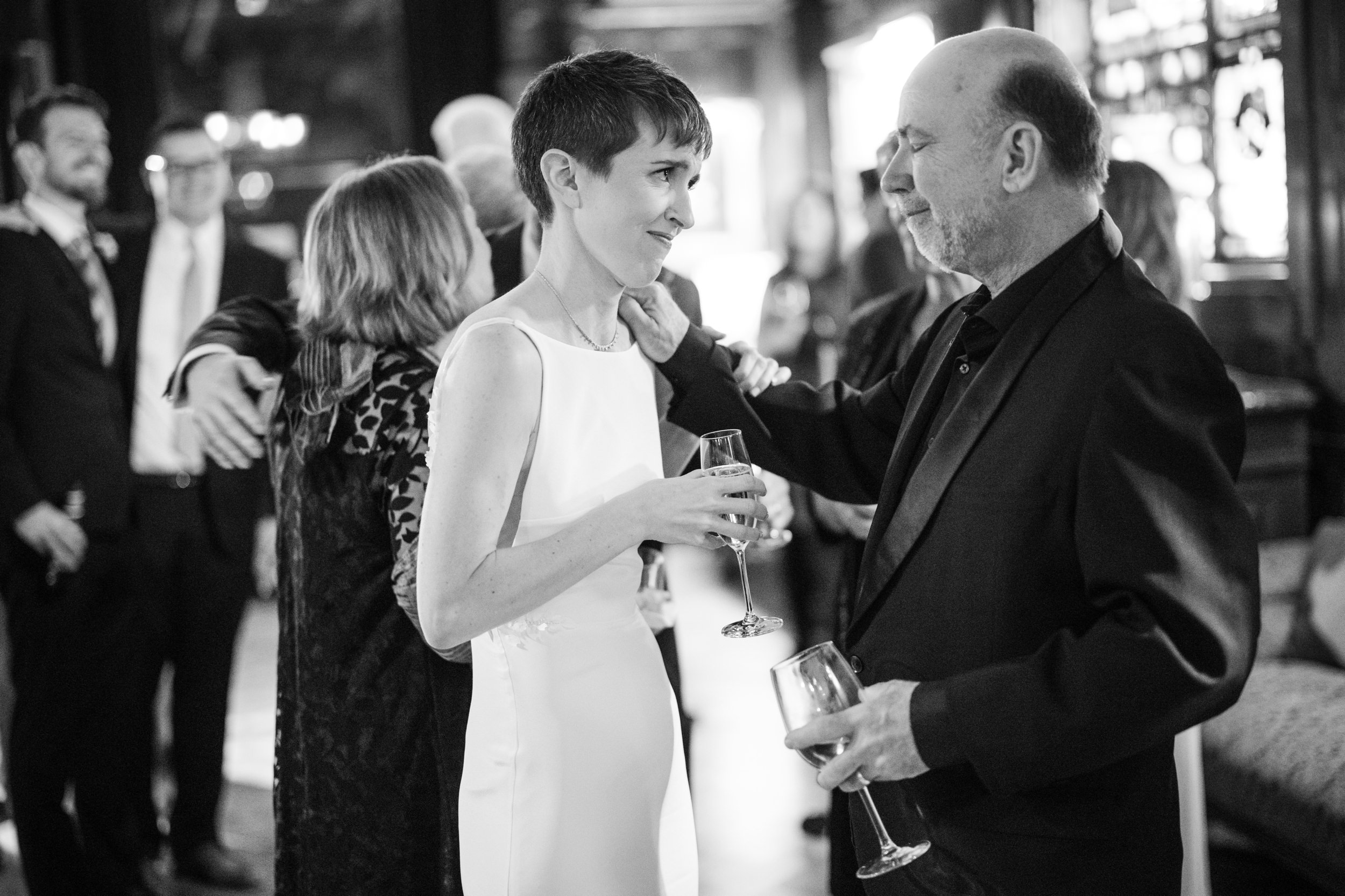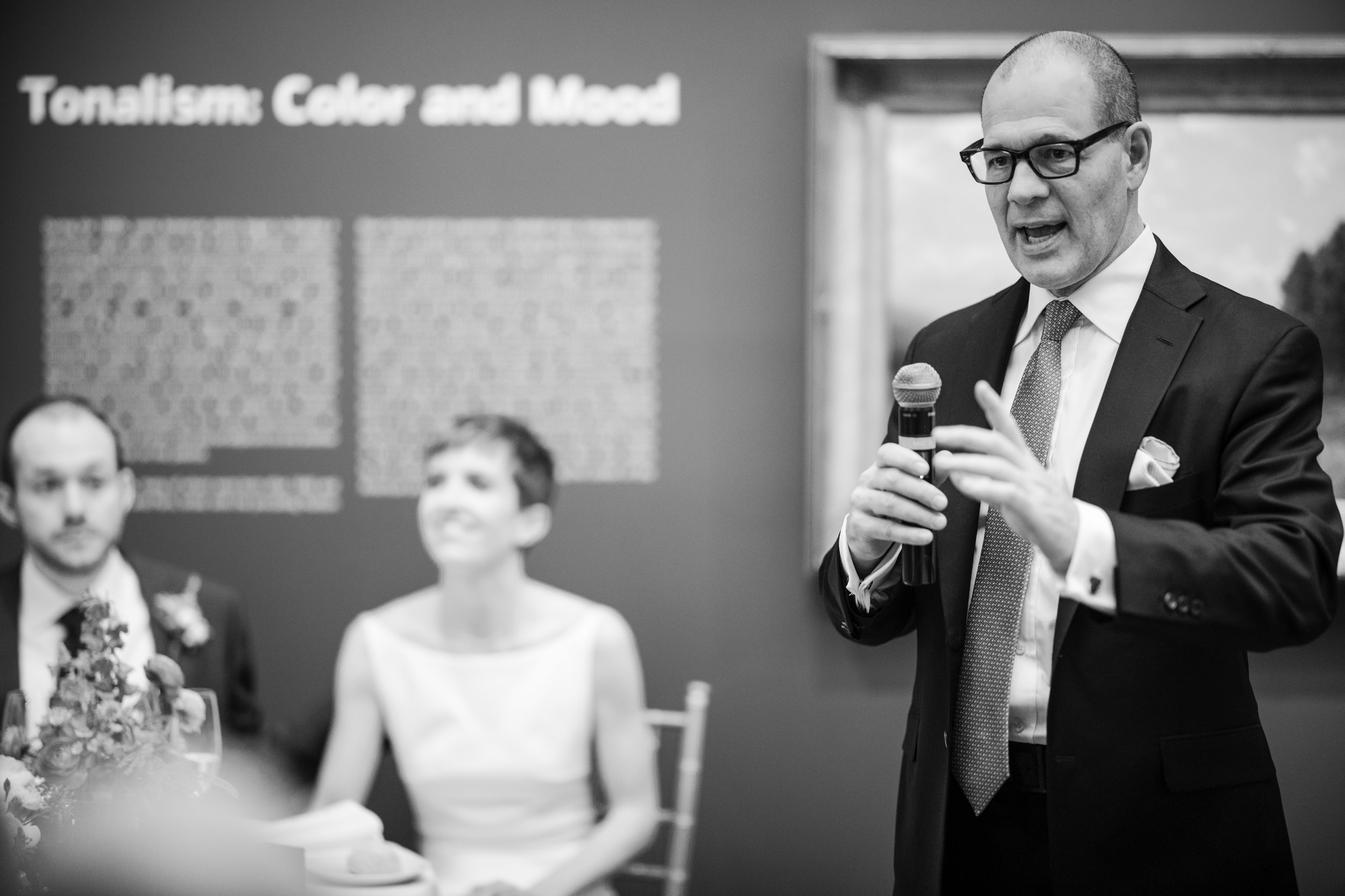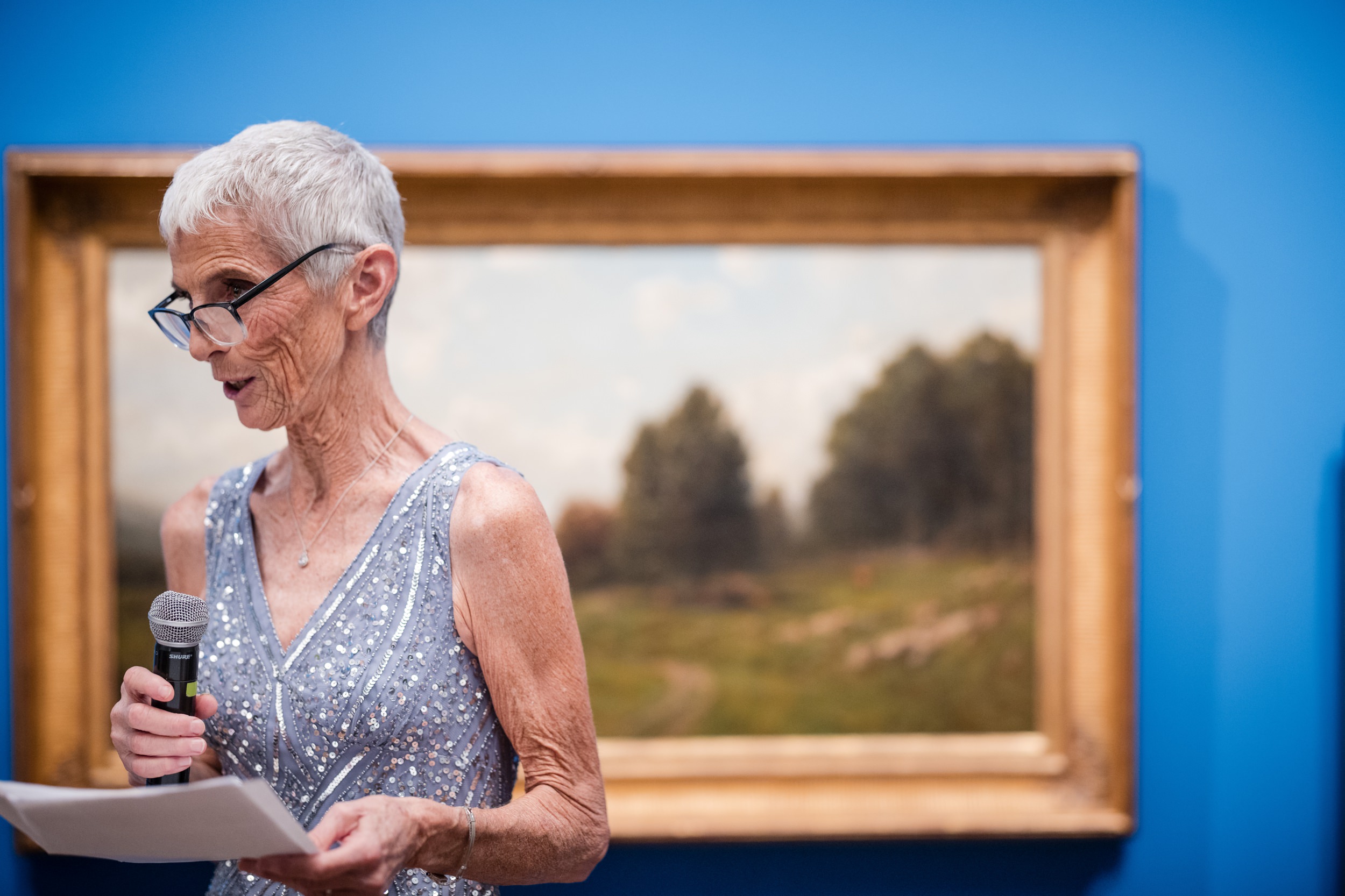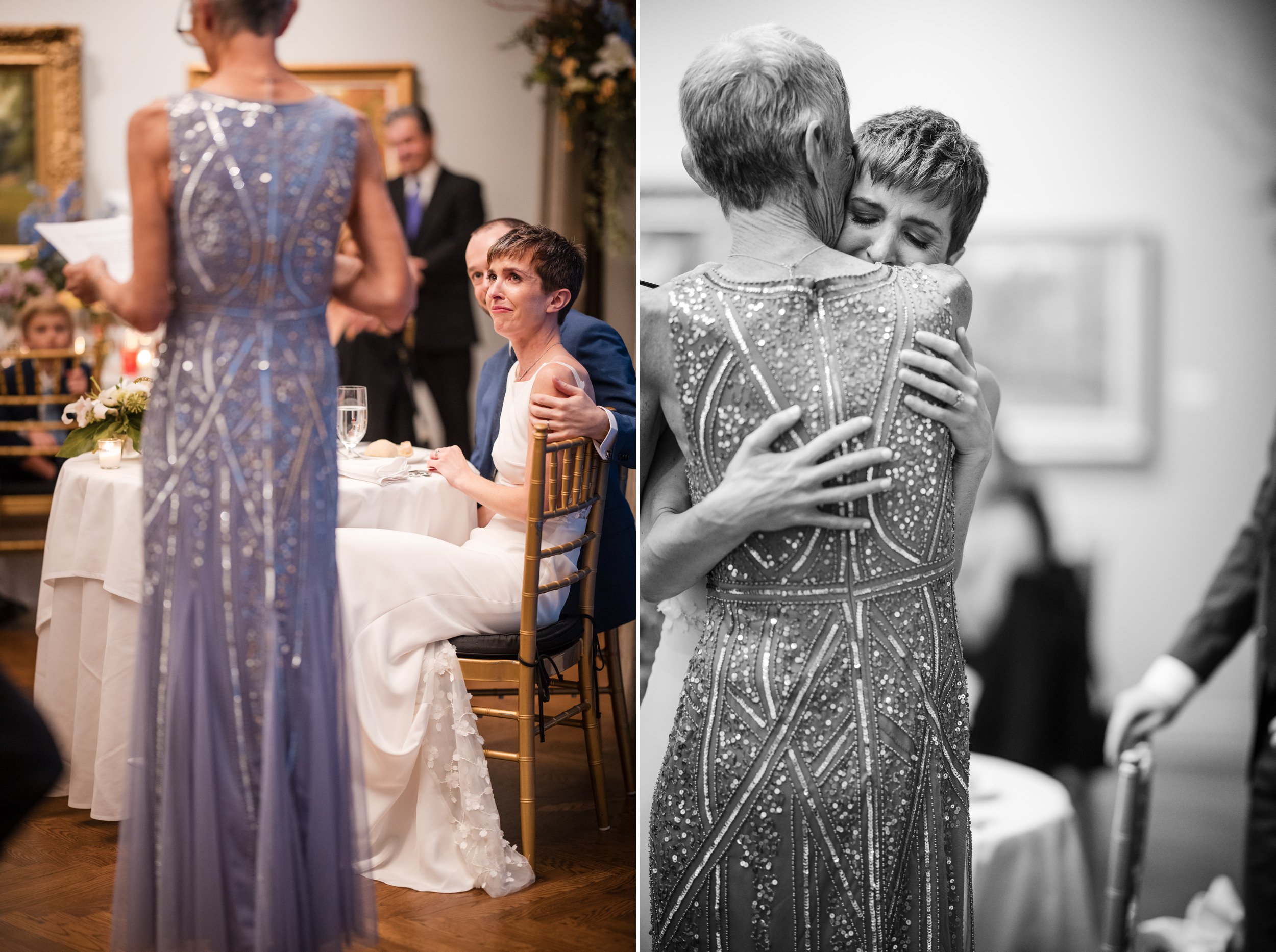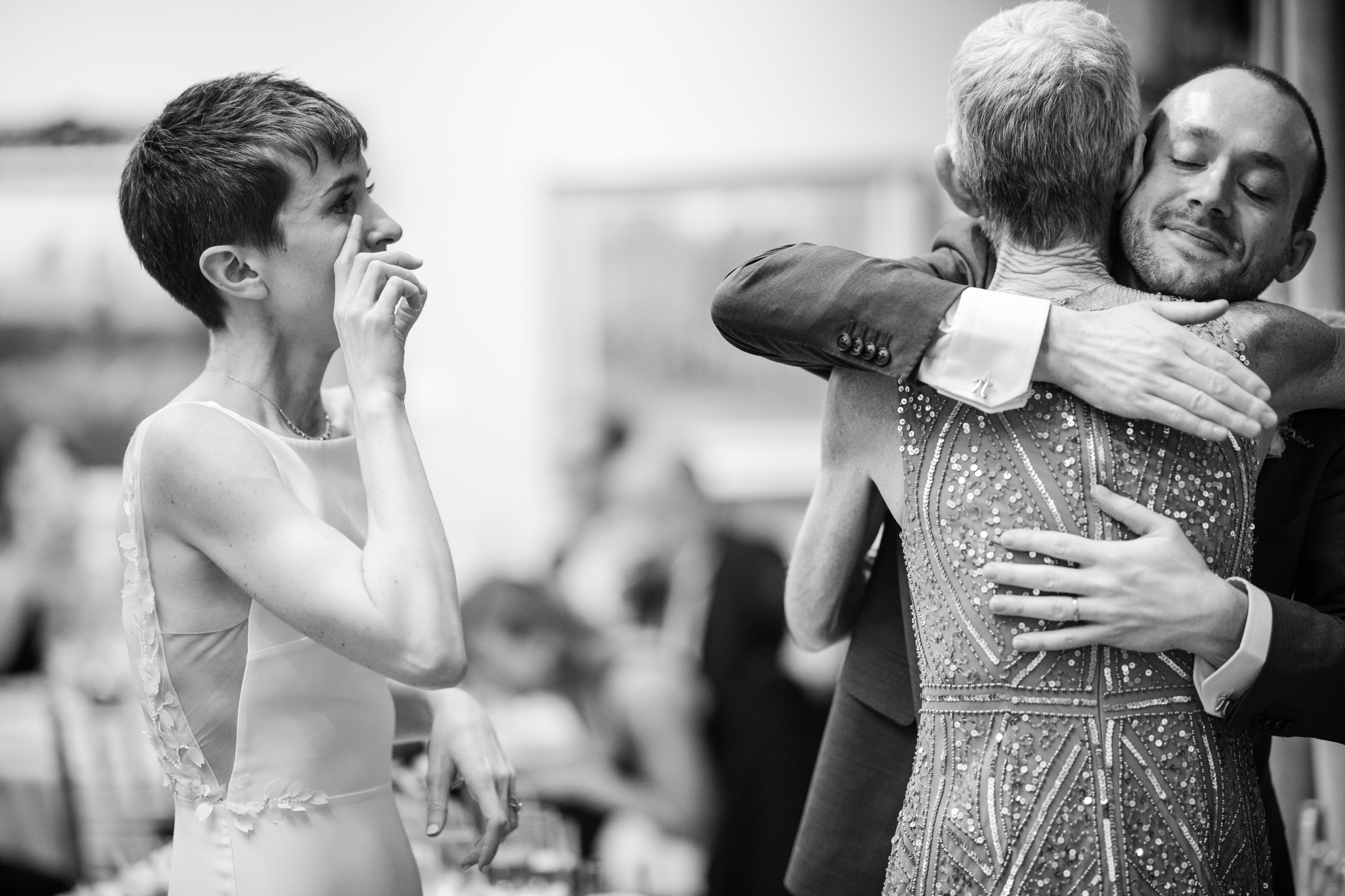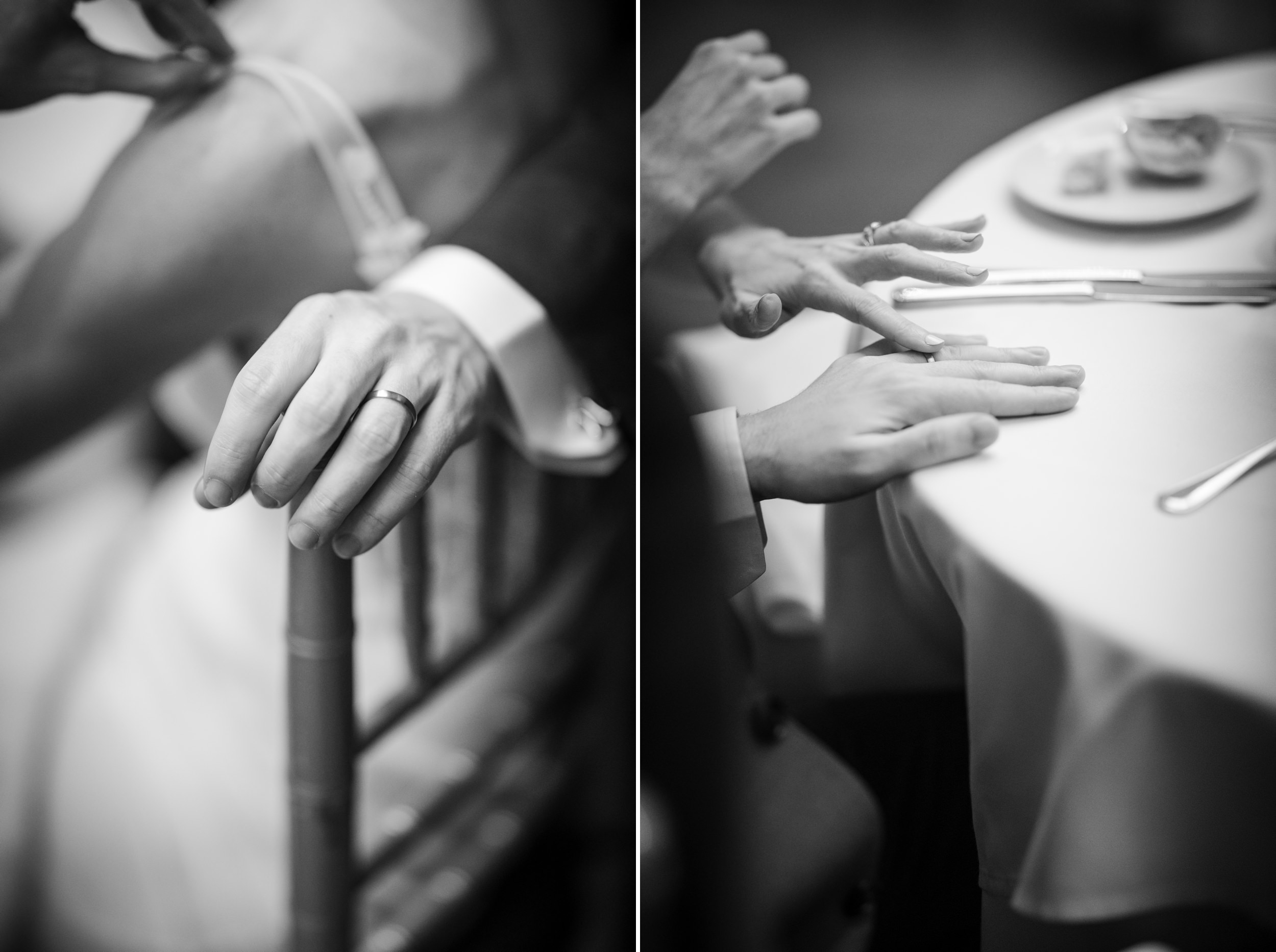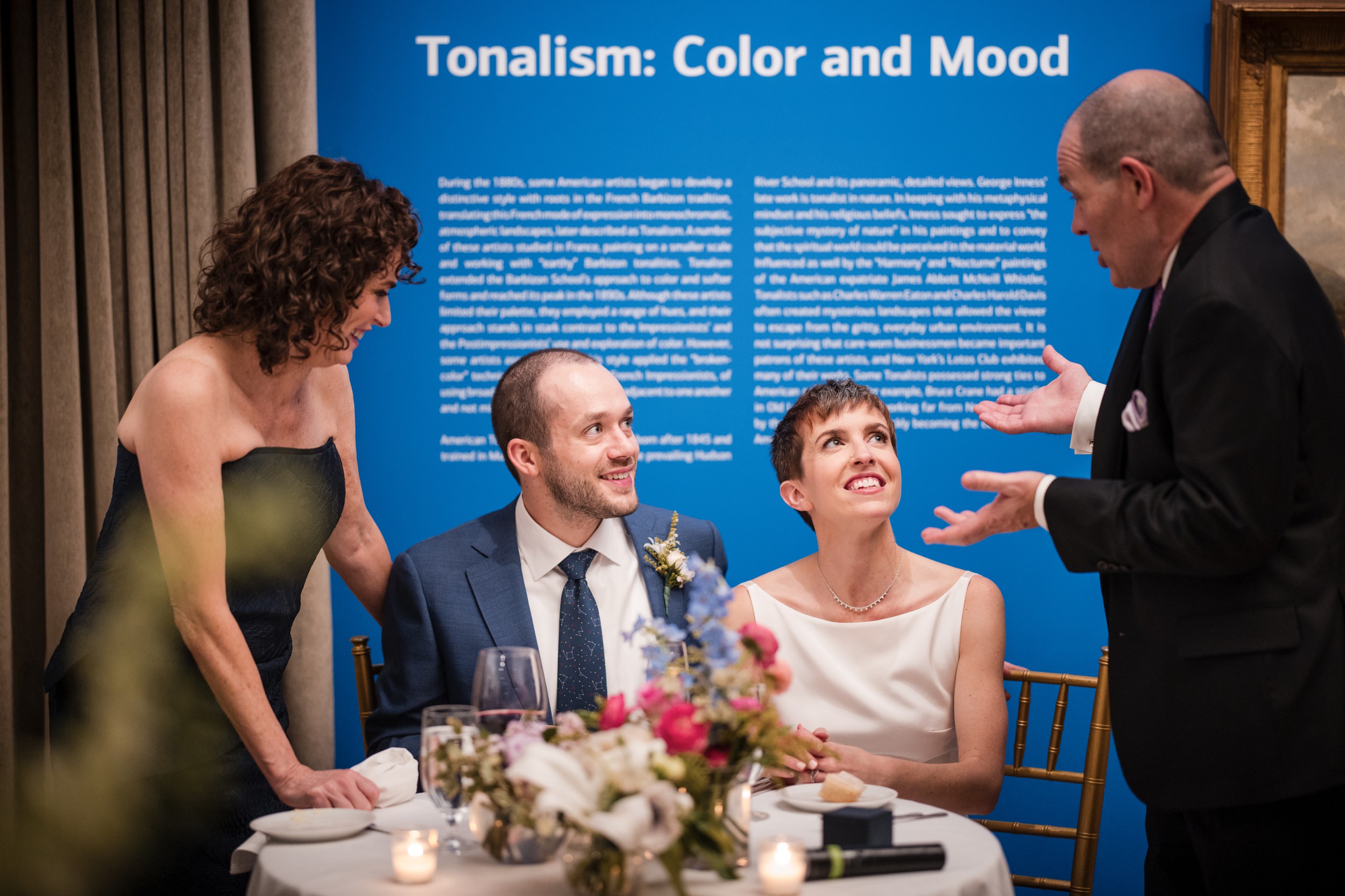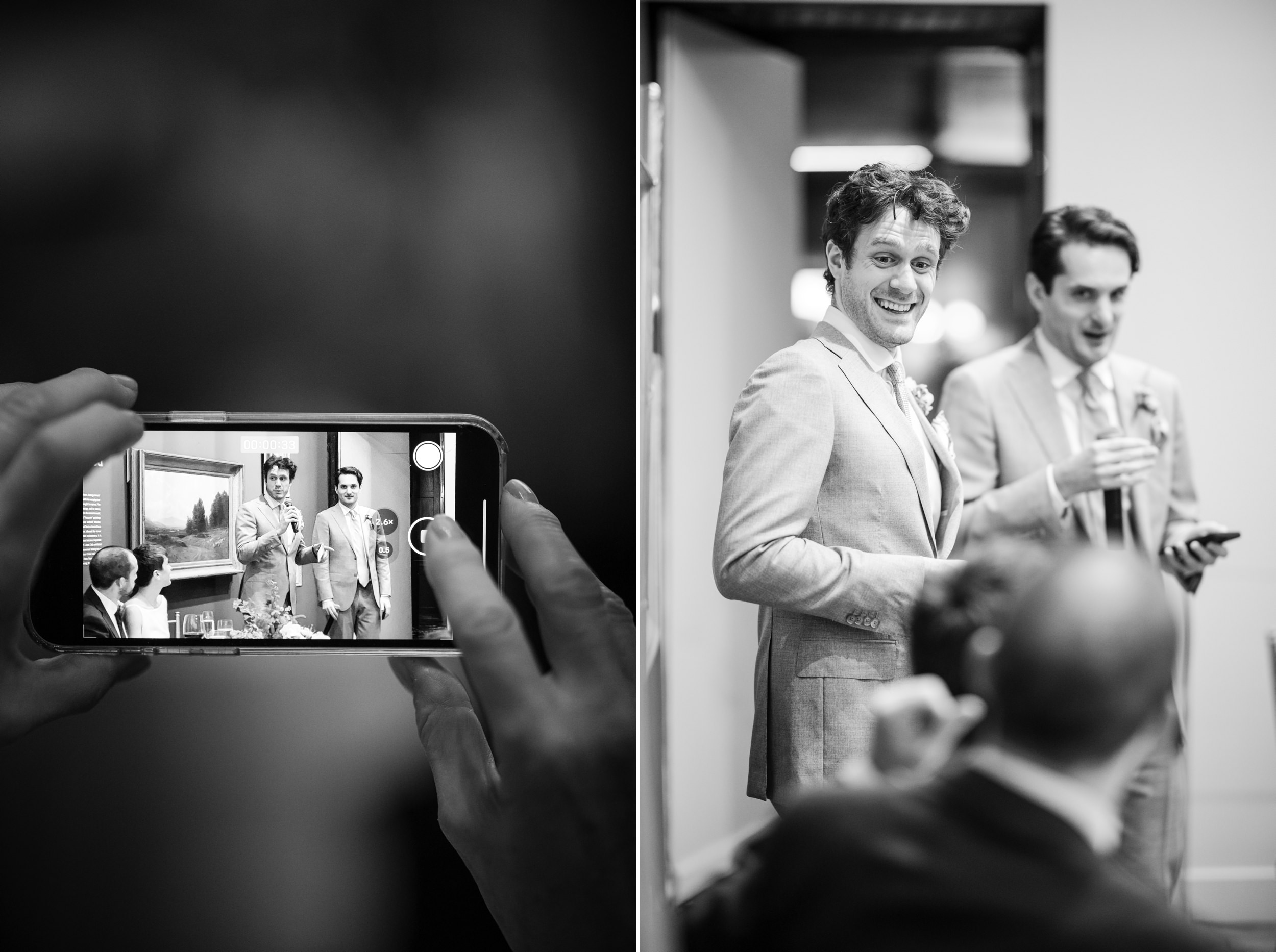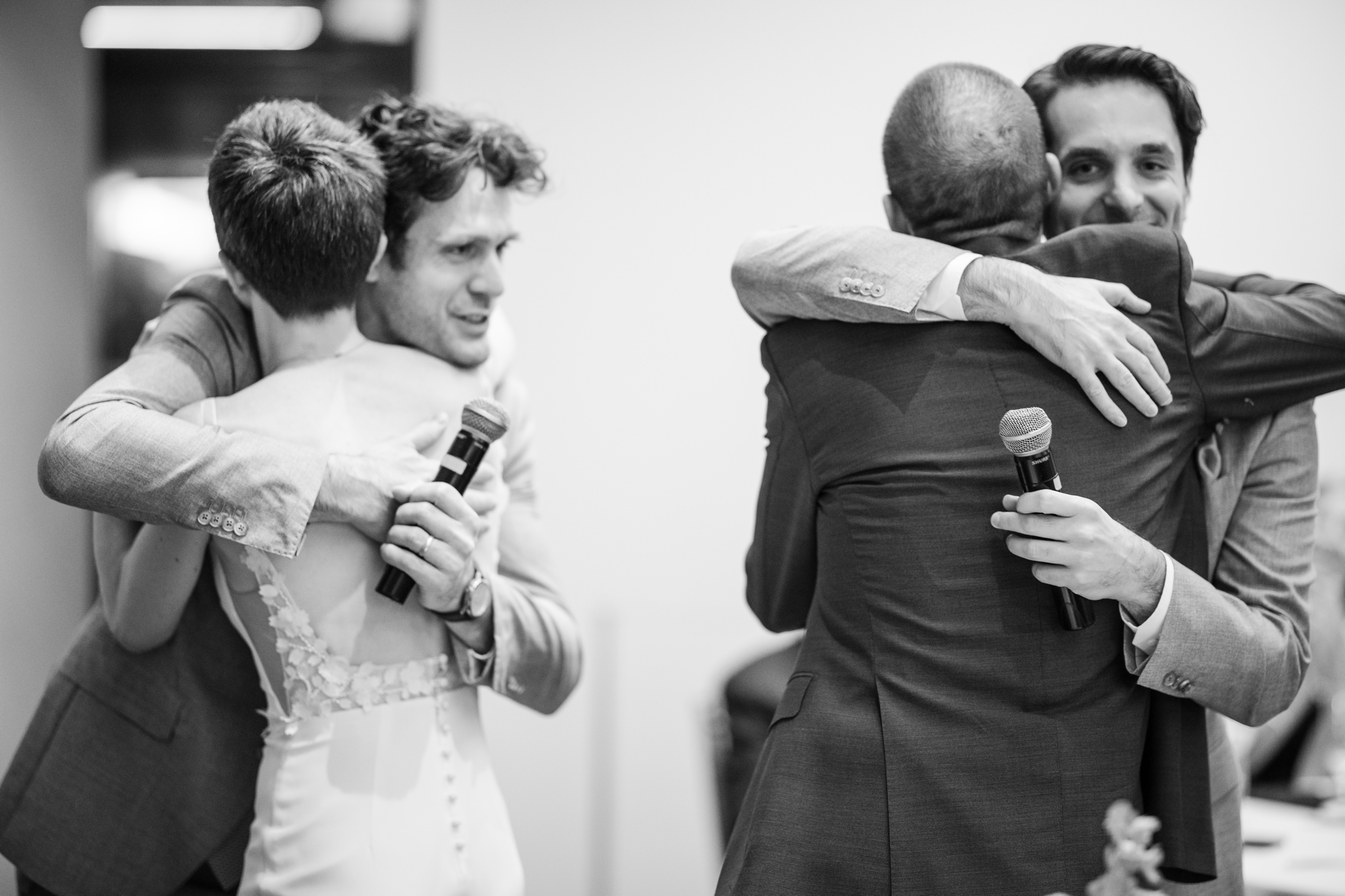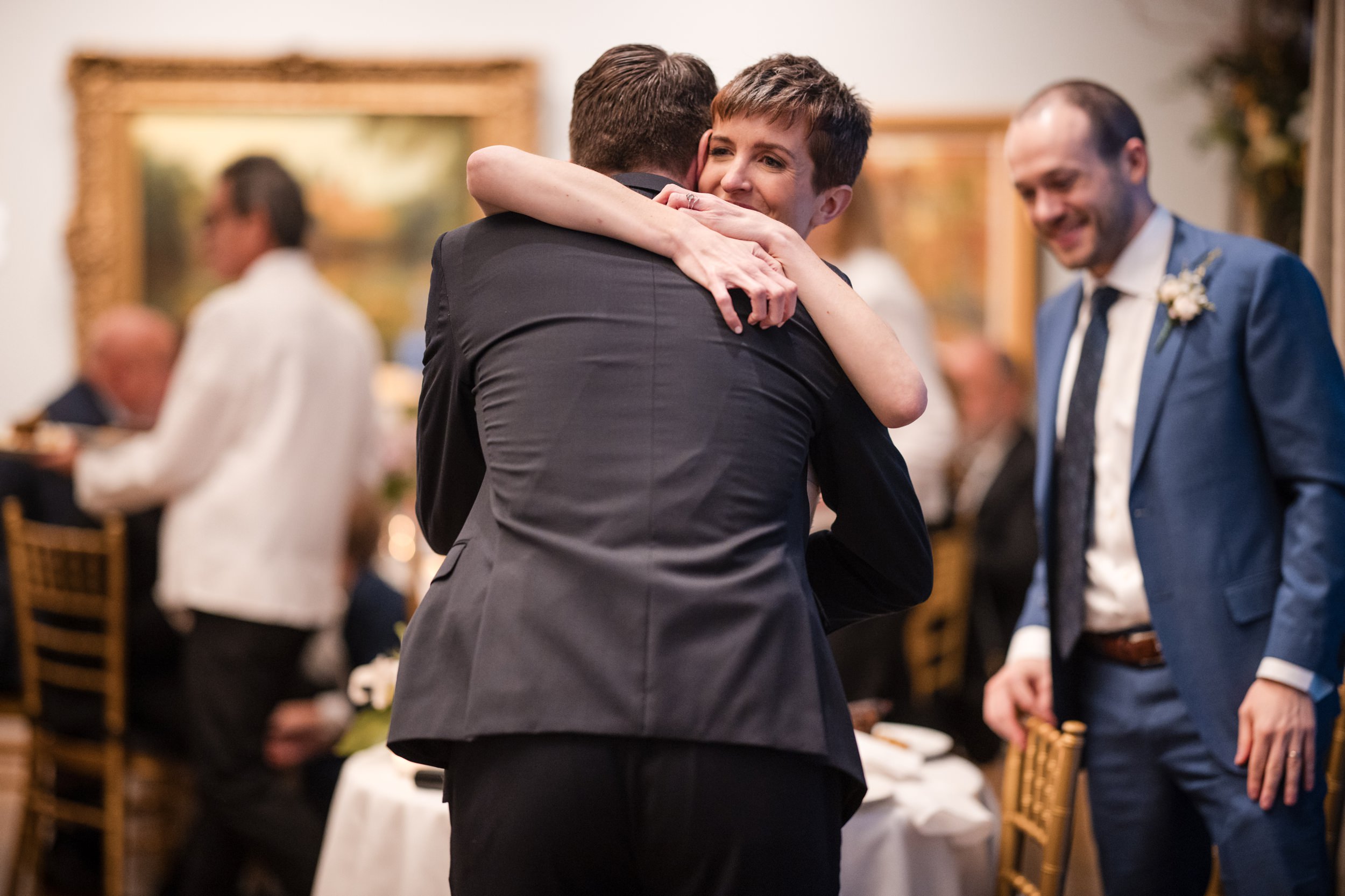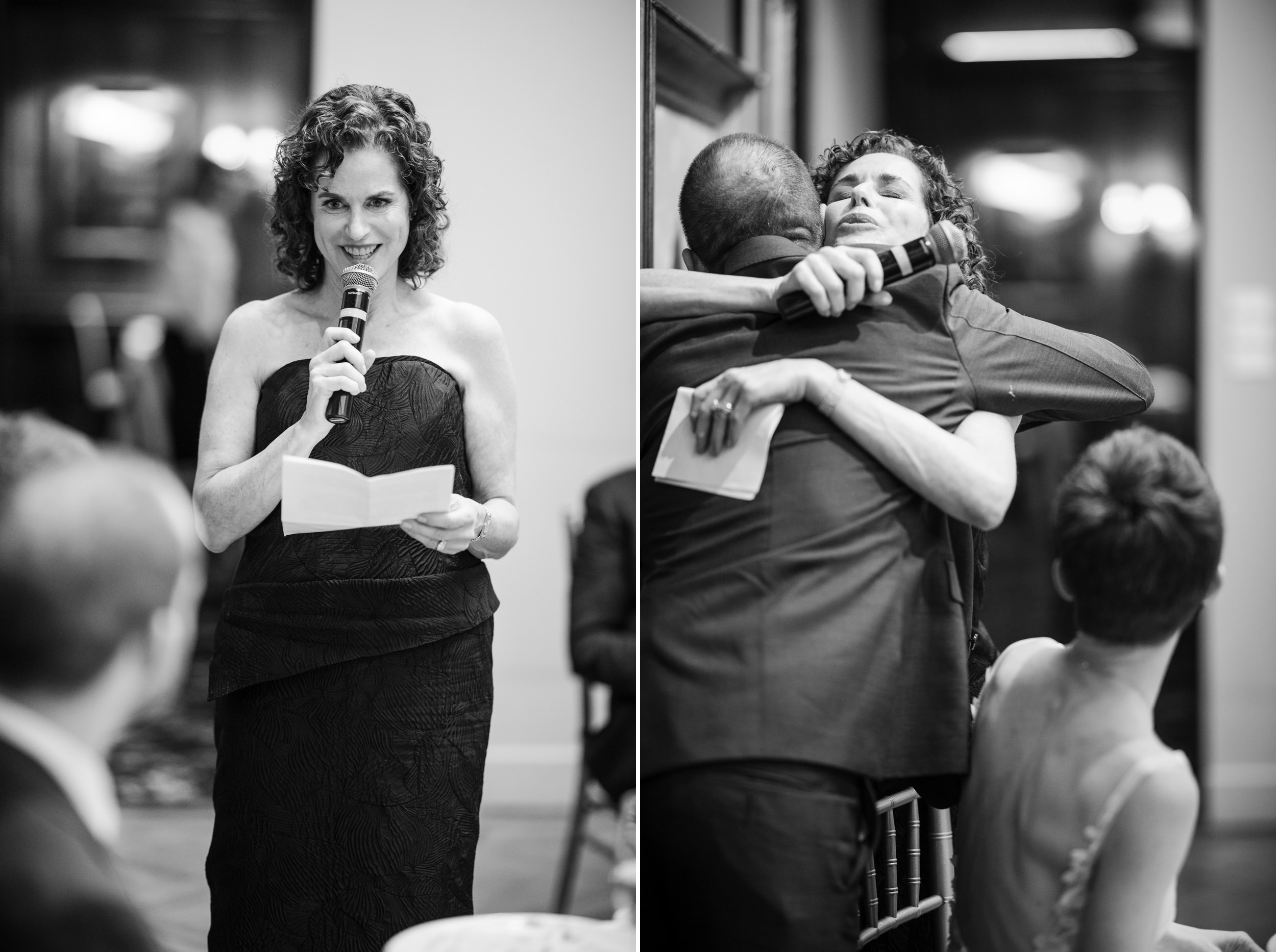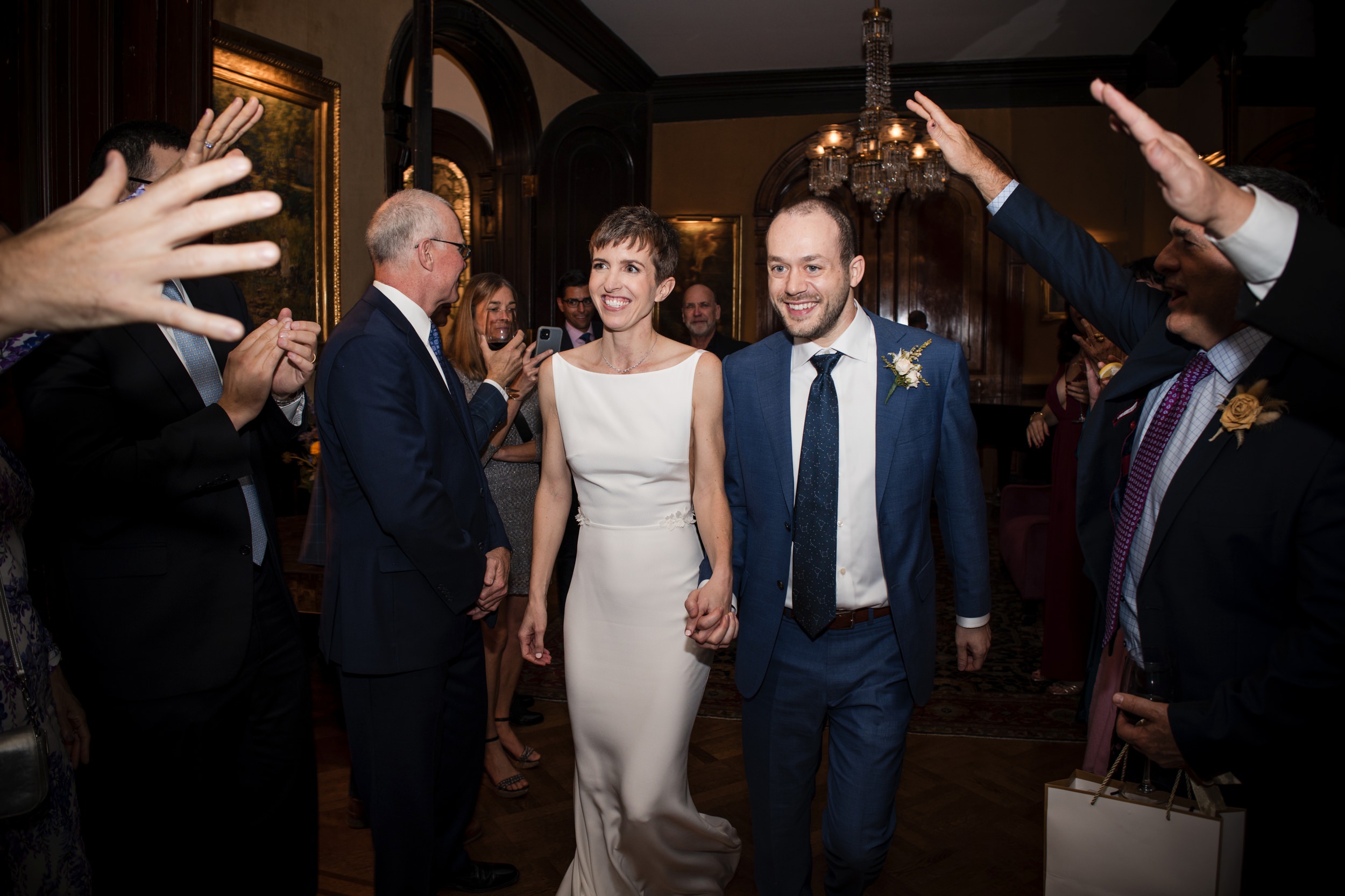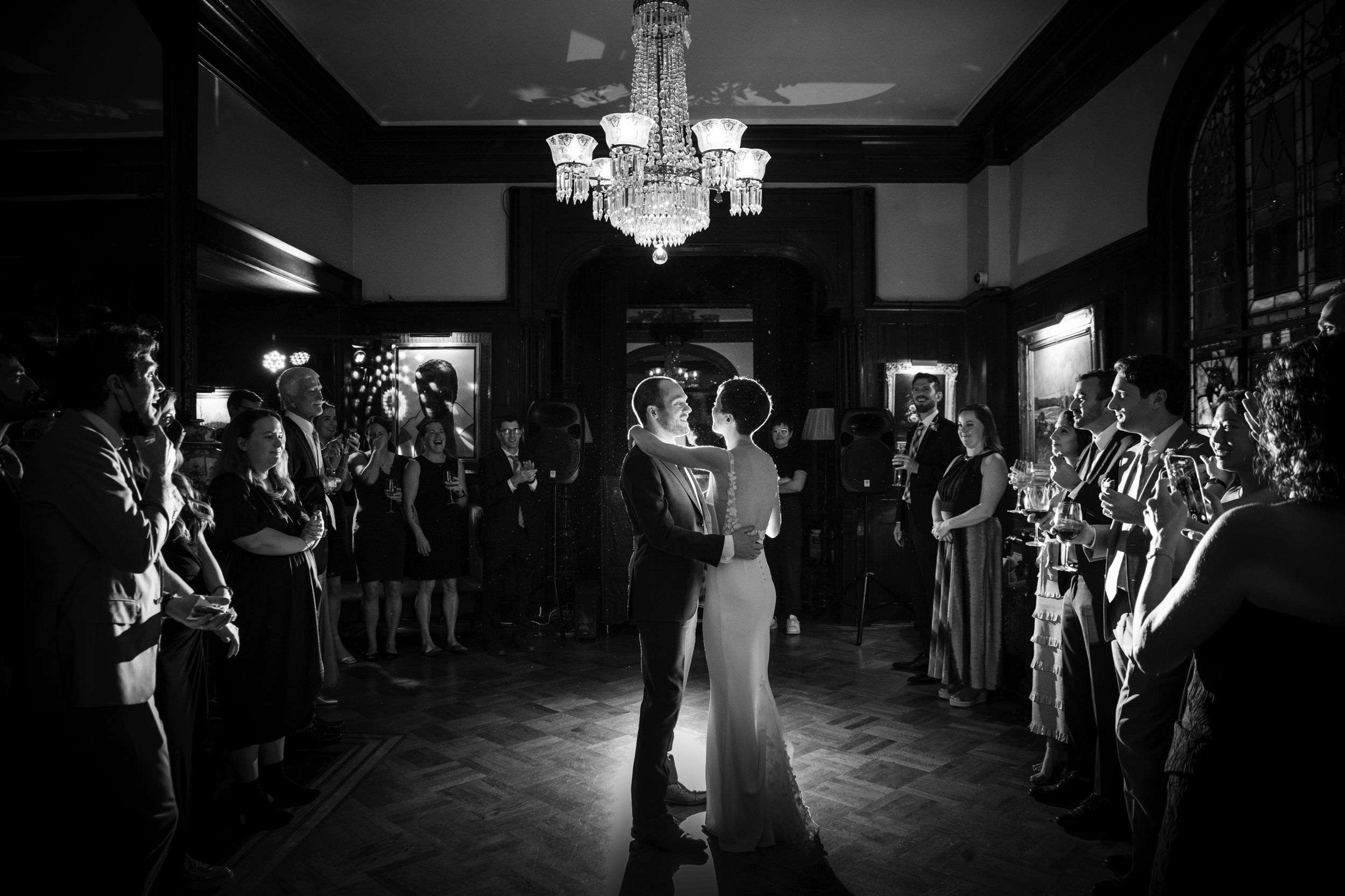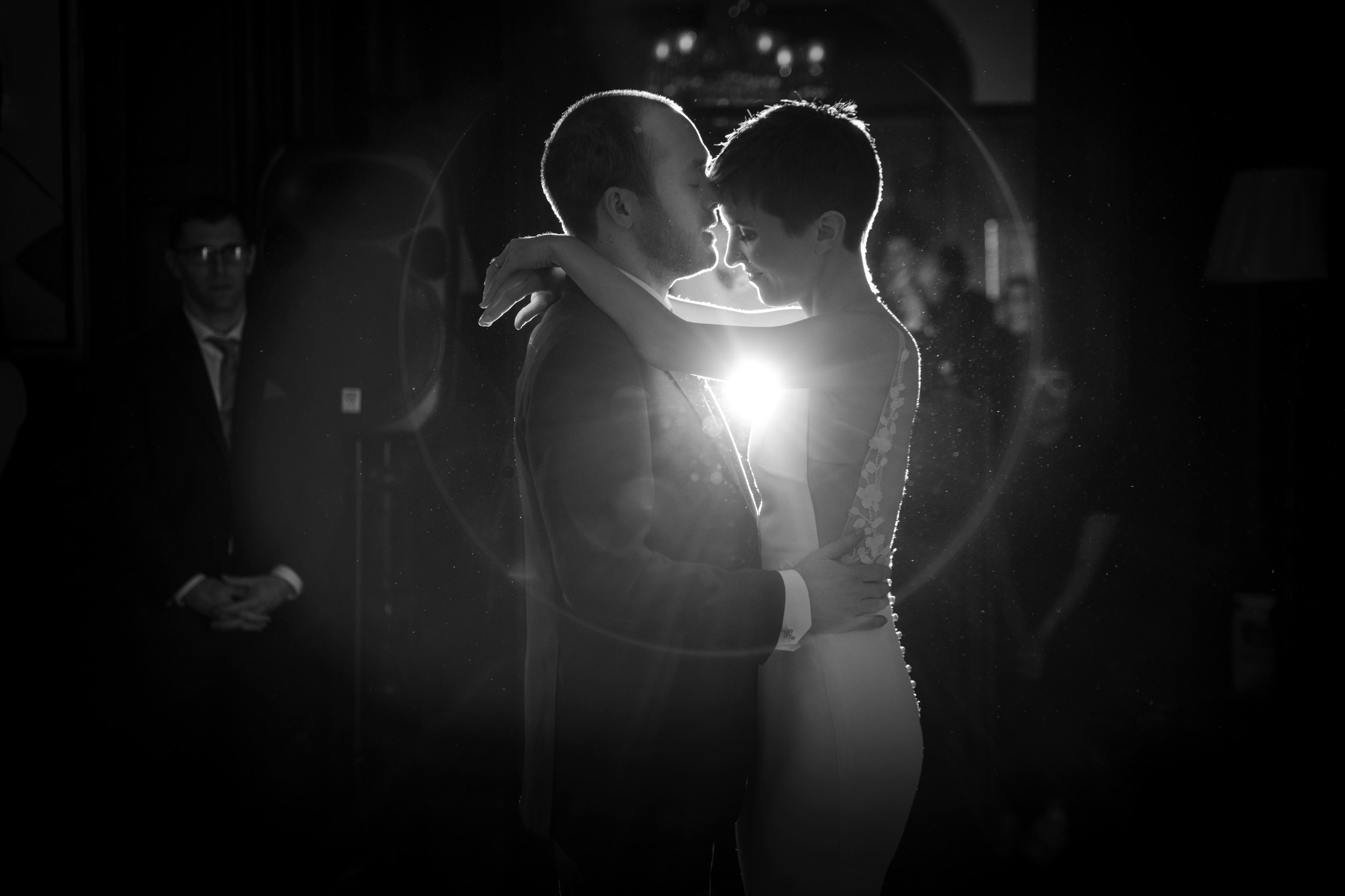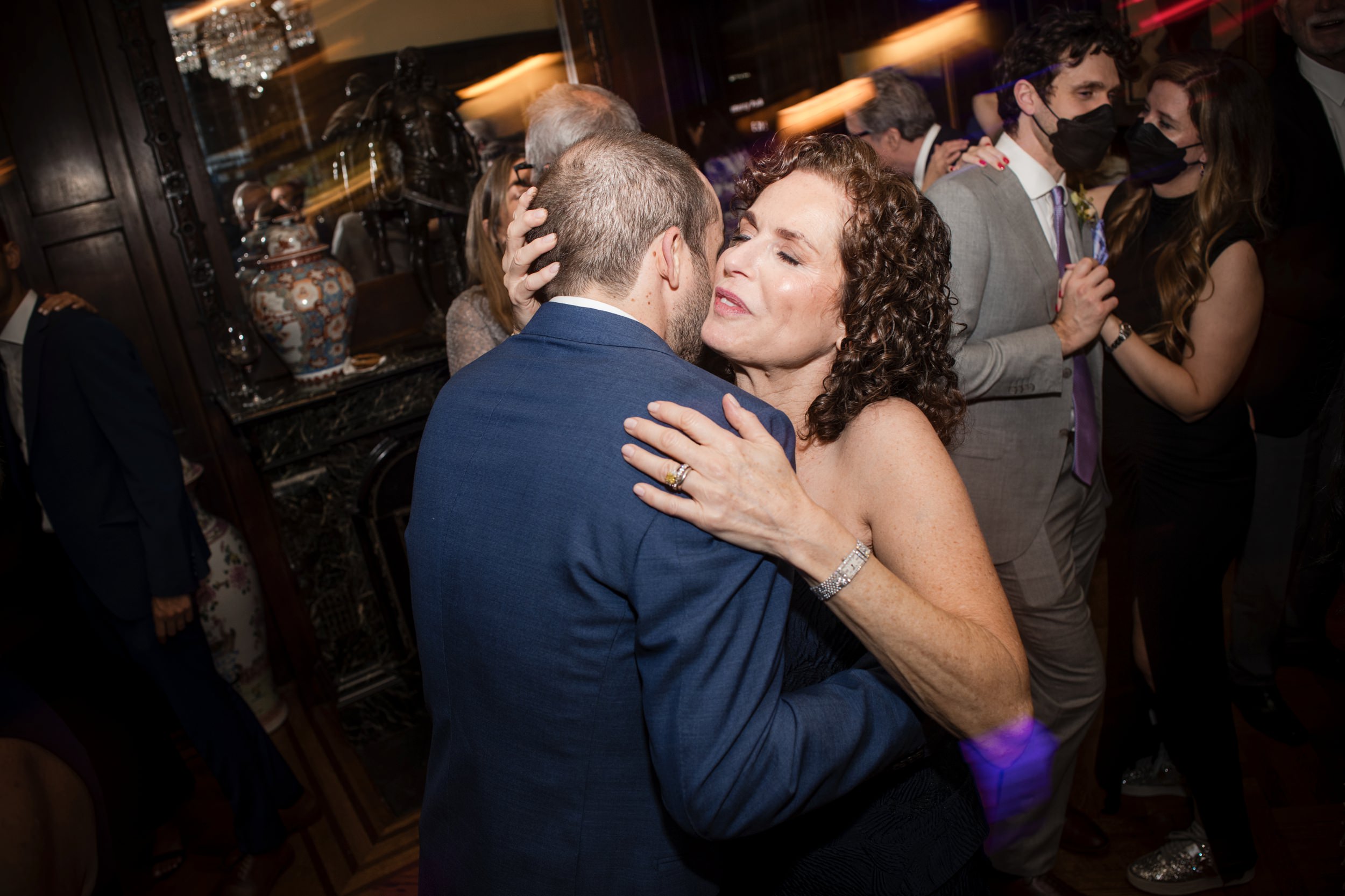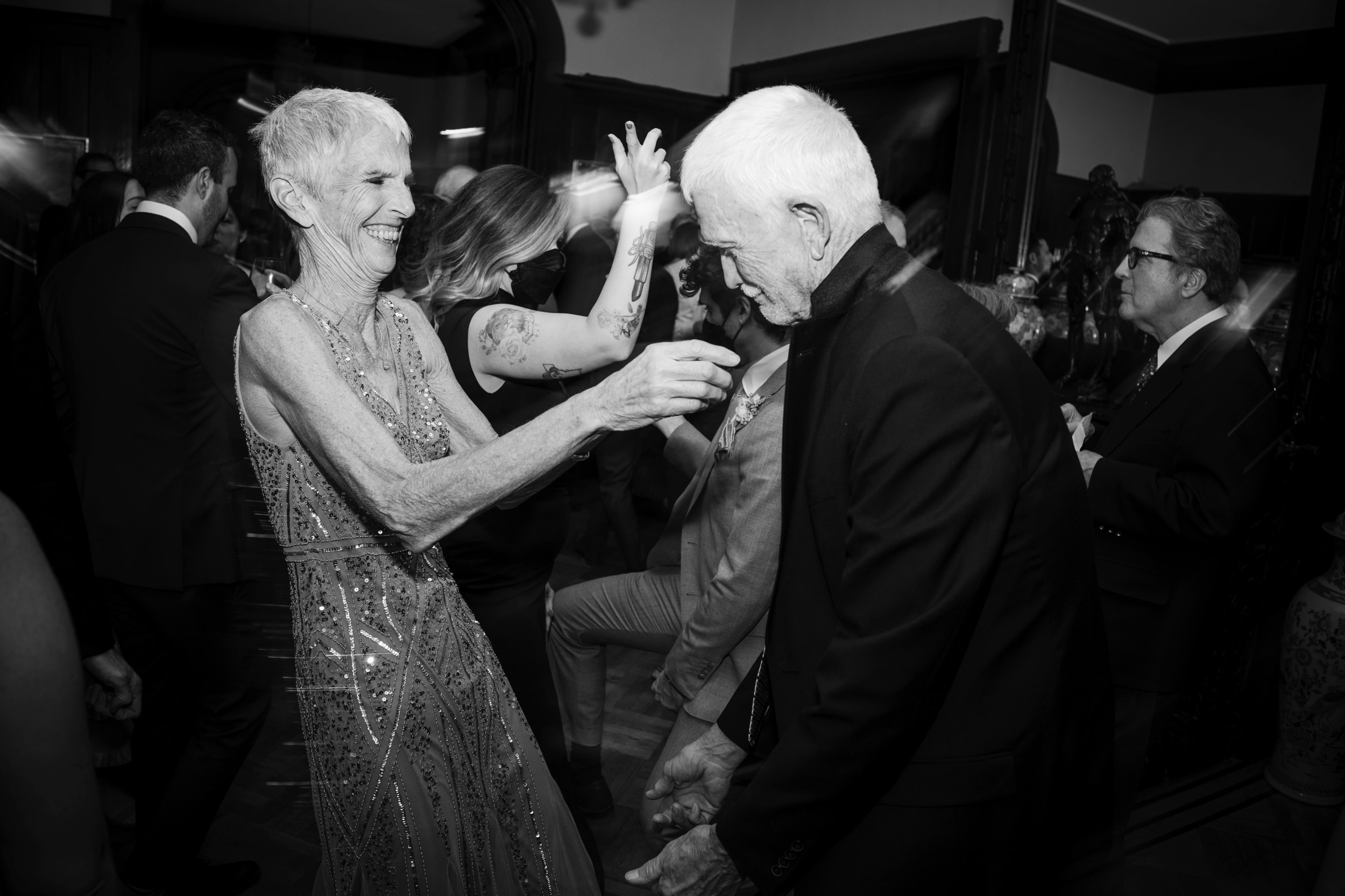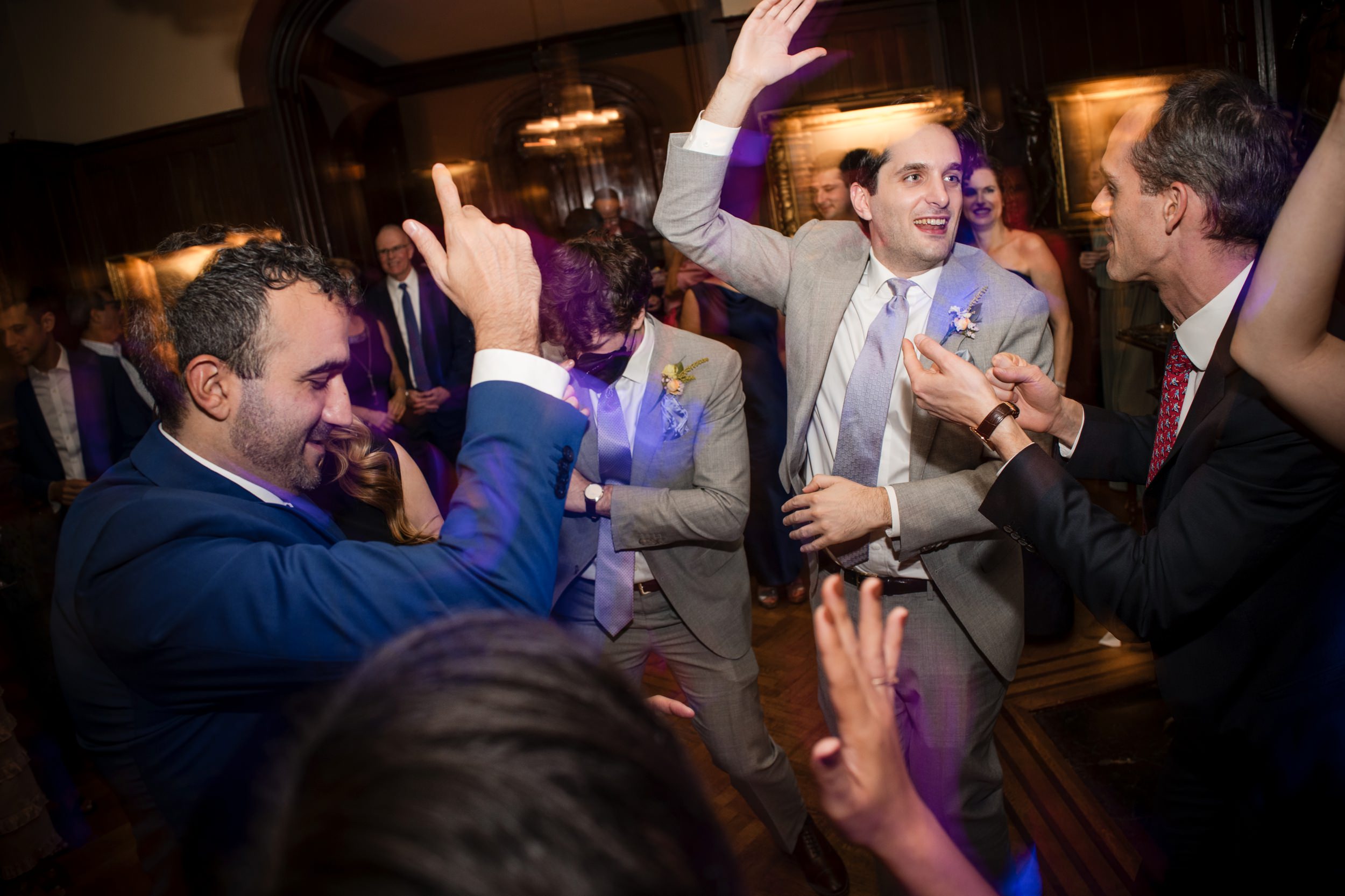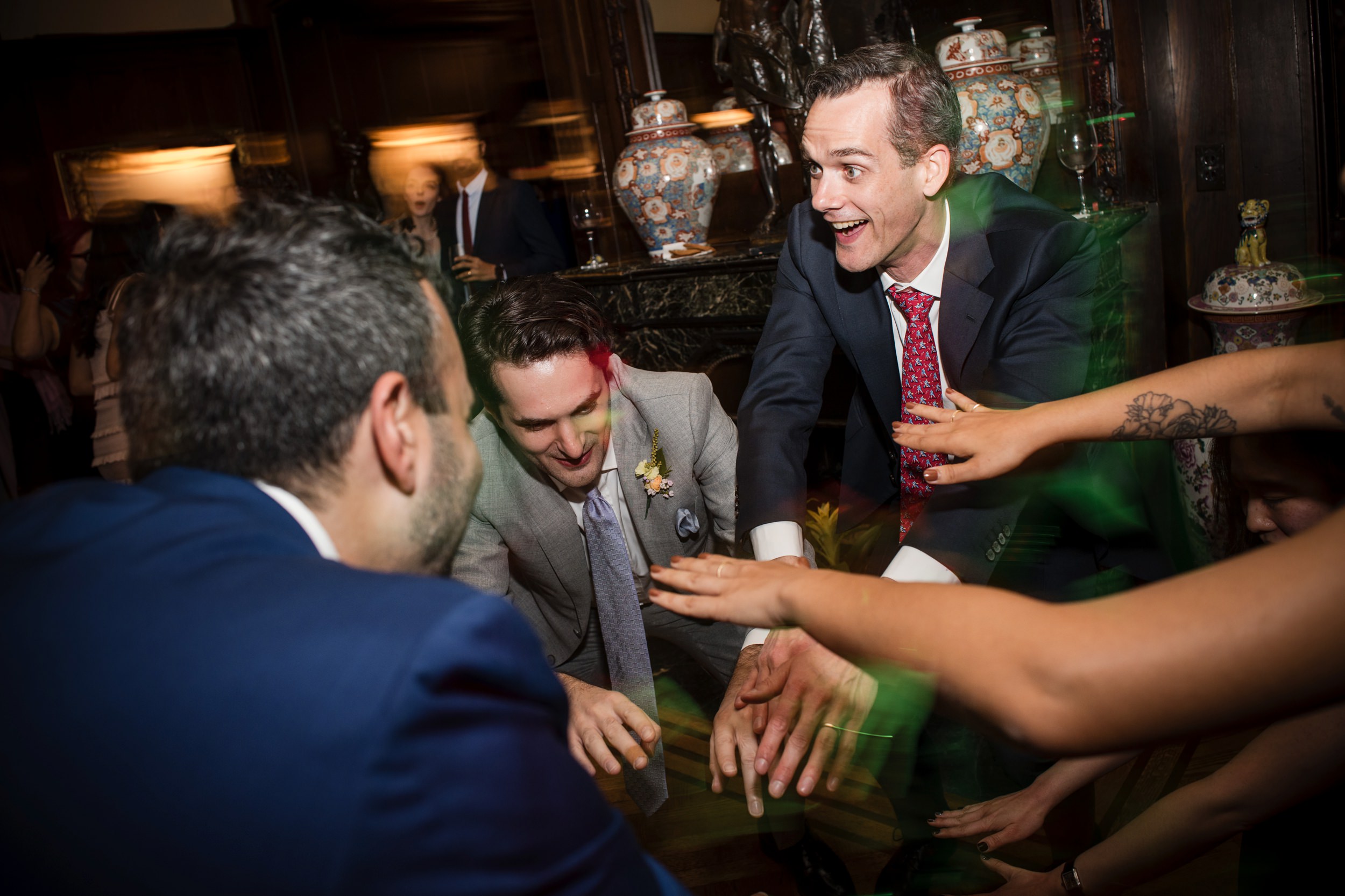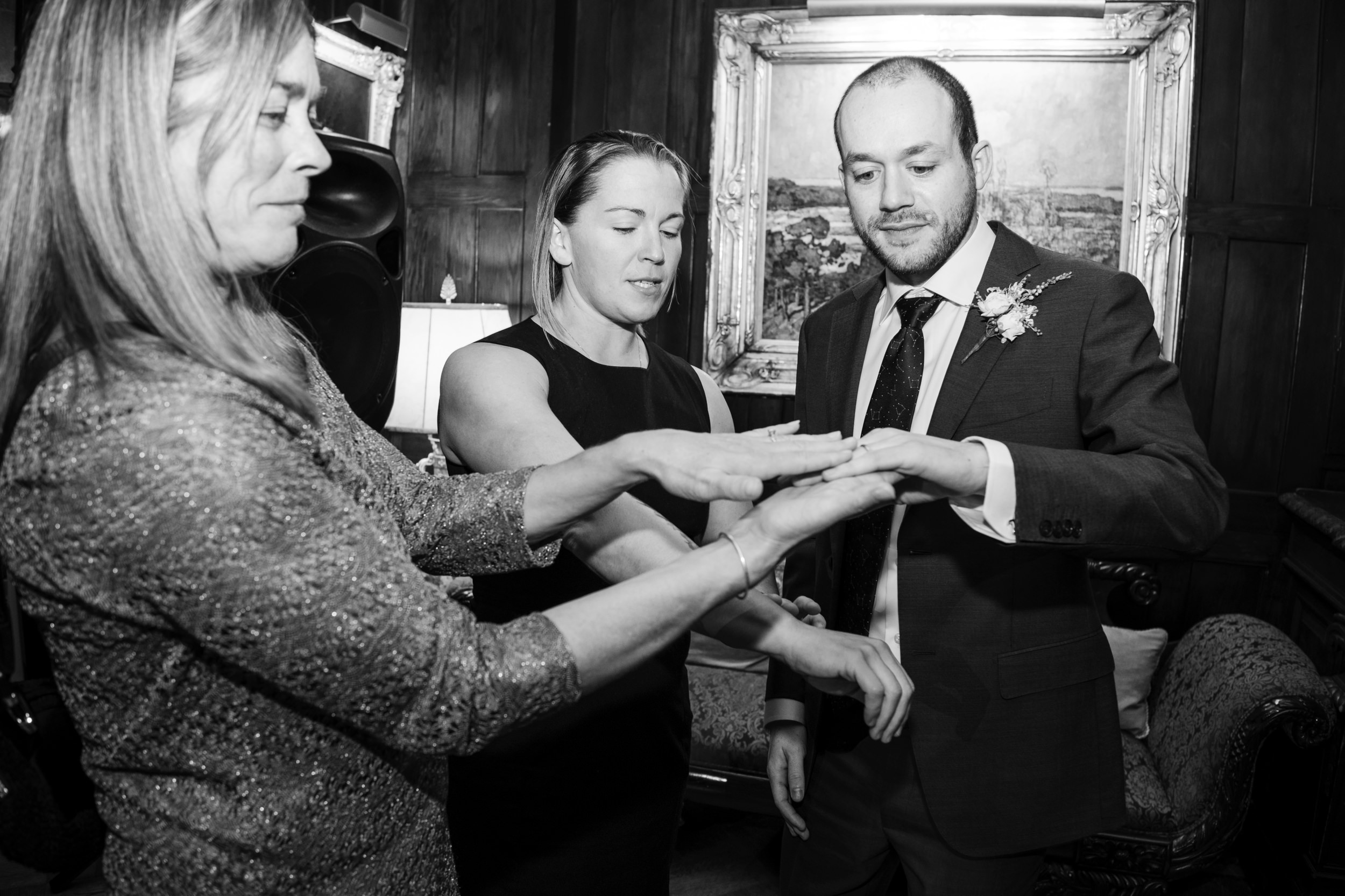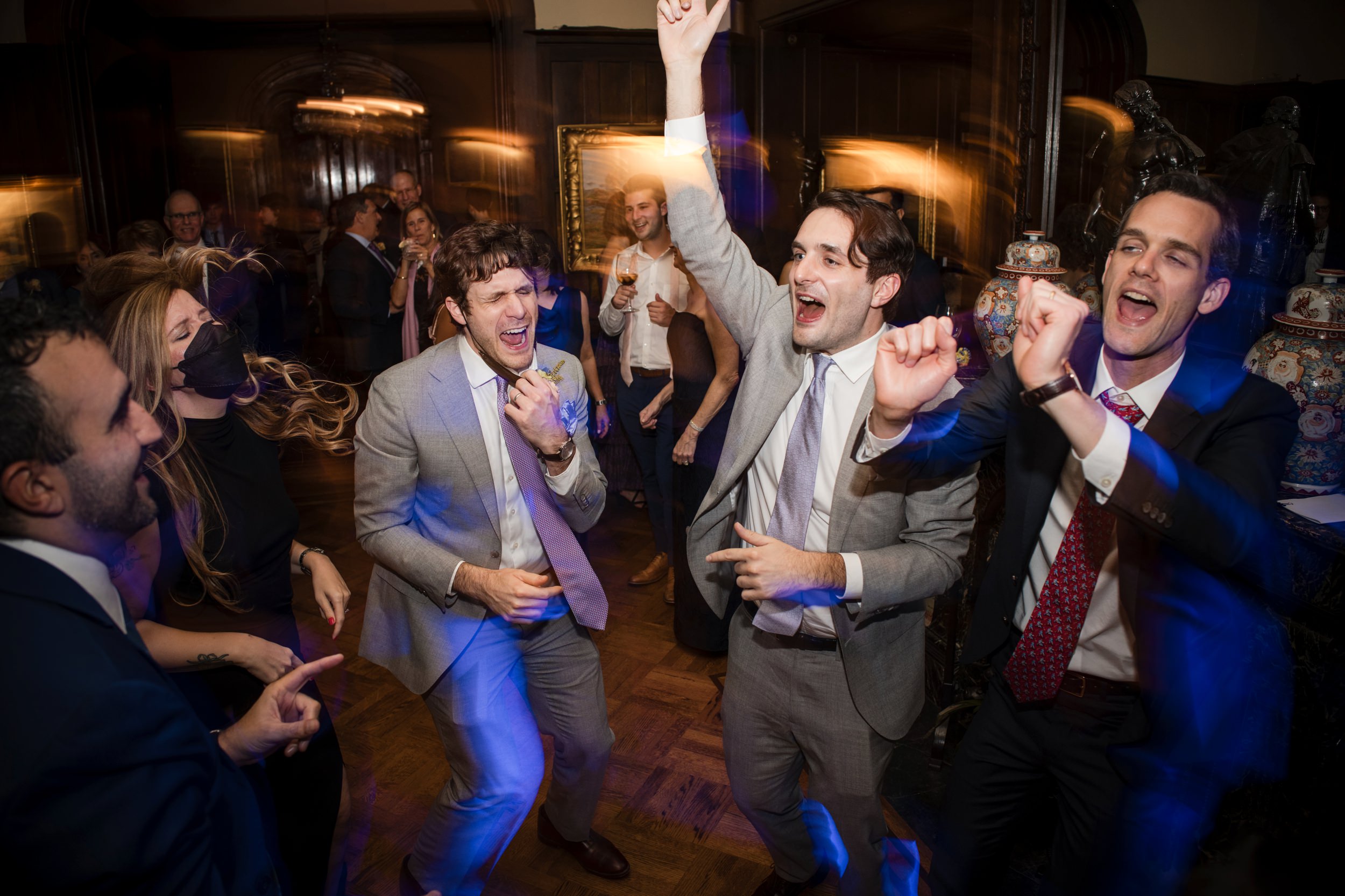I like to think that the fall colors held on just one more day for Allison and Dave’s National Arts Club wedding. The next morning the leaves were on the ground as the NYC Marathon wove through the city, but autumn stood still on that sleepy, sweet November Saturday.
I loved working at the National Arts Club. Everything about the space spoke to my favorite type of aesthetic: old New York vibes, dreamy dark interiors, gorgeous art, even down to the Gramercy Park neighborhood itself. Add to that lovely human beings like Allison and Dave and their group of warm, kind family and friends and it all came together to be the perfect fall Manhattan wedding.
About the National Arts Club
The National Arts Club is a private club on Gramercy Park South in Manhattan, New York City. It was founded in 1898 by Charles De Kay, a literary and art critic for “The New York Times,” with the aim of stimulating, fostering, and promoting public interest in the arts and to educate the American people in the fine arts.
Since the early 20th century, the club has been located in the historic Tilden Mansion at 15 Gramercy Park, once the home of Samuel J. Tilden, the former governor of New York and the Democratic candidate for the presidency in the disputed election of 1876. The building itself was declared a National Historic Landmark in 1976.
The National Arts Club has a rich history of supporting the arts and has been a gathering place for artists, patrons, and arts enthusiasts for over a century. Members have included such luminaries as Theodore Roosevelt, Woodrow Wilson, Augustus Saint-Gaudens, Robert Frost, and Margaret Bourke-White. The club offers a range of activities including exhibitions, theatrical and musical performances, lectures, and readings.
Throughout its history, the National Arts Club has been known for its commitment to the arts across a wide range of disciplines, including visual arts, literature, film, architecture, and more. Its galleries are open to the public, and the club is known for its generous scholarships and awards in various fields of art.
The National Arts Club continues to be a vibrant cultural institution, hosting art exhibitions, theatrical performances, lectures, and award ceremonies. It has kept its mission to promote public interest in the arts and has remained a central fixture in New York’s cultural scene.
About Gramercy Park
Gramercy Park is a private park located in the Gramercy neighborhood of Manhattan, New York City. It is one of only two private parks in New York City – the other being Sunnyside Gardens Park in Queens – and one of the most prestigious and historic areas in the city.
Here are some key points about Gramercy Park:
- Private Park: Gramercy Park is a two-acre private park, and only people residing around the park who pay an annual fee have a key to it. The park is generally not open to the public, although there are certain times, such as on Christmas Eve or through events at surrounding institutions like the National Arts Club, when the gates are opened more widely.
- Historic District: The area around the park, known as the Gramercy Park Historic District, is noted for its early 19th-century architecture and the well-preserved townhouses and elegant buildings. This district was one of the city’s first historic districts.
- Development: The park was developed starting in 1831 by Samuel B. Ruggles, a developer and advocate of open space, who deeded the land to the owners of the 60 lots around the park for a perpetual trust.
- Architecture: The buildings around the park include examples of Victorian, Greek Revival, and Gothic styles, among others. Notable buildings include the National Arts Club and the Players Club, which are both located in historic 19th-century mansions.
- Famous Residents: Over the years, Gramercy Park has had many famous residents, including actors, writers, and politicians. These have included Edwin Booth, one of America’s greatest Shakespearean actors, as well as John Steinbeck and Margaret Hamilton.
- Cultural Influence: The park and its surroundings have been featured in literature and films, underscoring its role in American cultural life.
- Preservation: Efforts have been made throughout the years to preserve the park’s historic character. Many of the buildings around it are landmarked, which helps protect the architectural integrity of the area.
- You can’t take pictures there. I KNOW, I KNOW. What a bummer, right? This is one huge point to remember if you’re a wedding photographer attempting to get a key into this legendary location!
Despite being a private park, Gramercy Park contributes to the character of the neighborhood by providing a peaceful green space in the midst of a bustling city. It is a rare example of a private urban park and remains a curious relic of New York City’s history of development and urban planning.
The National Arts Club interior
The National Arts Club in New York is quite simply a wedding photographer’s dream. The interiors are truly magical, and a dream to photograph.
Here are some details about the interiors of the National Arts Club:
- Grand Gallery: Upon entering the club, members and guests are often struck by the Grand Gallery. It serves as an exhibition space and features rich wood paneling, stately columns, and an opulent coffered ceiling, adorned with intricate designs that add to its grandeur. This space hosts rotating art exhibitions, showcasing both contemporary artists and historical works.
- Dining Room: The club’s dining room is a space of old-world elegance, often highlighted by a large fireplace, wood paneling, and historic artwork adorning the walls. The ambiance is one of classic refinement, befitting the club’s commitment to tradition and culture.
- Library: The library within the club is a reflection of the institution’s literary roots, filled with shelves of books that cover a range of subjects within the arts and culture. The room’s decor is conducive to contemplation and study, featuring comfortable seating, rich wooden bookcases, and decorative elements that speak to the club’s intellectual pursuits.
- Bar: The bar area of the National Arts Club is often described as intimate and inviting, with wood accents, stained glass, and artwork that creates a warm atmosphere for socializing and enjoying the club’s many offerings.
- The Grand Staircase: An architectural highlight is the grand staircase, which leads members and guests to the upper floors. It is a focal point for its craftsmanship and for displaying the club’s commitment to beauty and art.
- Tiffany Room: One of the most notable interior spaces is the Tiffany Room, which features stained glass and other decorative elements designed by the famous artist Louis Comfort Tiffany. The room embodies the Gilded Age’s opulence and attention to artisanal detail.
- Period Rooms: Many rooms within the club are preserved to reflect certain historical periods, with appropriate furnishings and artwork. They are often used for specific events, meetings, or performances and maintain an aura of being transported back in time.
- Ceilings and Chandeliers: Throughout the mansion, the ceilings and light fixtures contribute to the aesthetic of each room. Hand-painted ceilings and ornate chandeliers are common, enhancing the club’s artistic environment.
The interiors of the National Arts Club not only reflect the historical significance of the building itself but also represent the club’s ongoing celebration of the arts. Each room tells a story, and the furnishings, artwork, and decorative details collectively create an inspiring environment for the club’s members and guests. It is important to note that the club has undergone various renovations and restorations over the years to maintain and preserve these historic interiors for future generations.
In conclusion, this gorgeous historical space is a dream for wedding photographers and clients alike!
